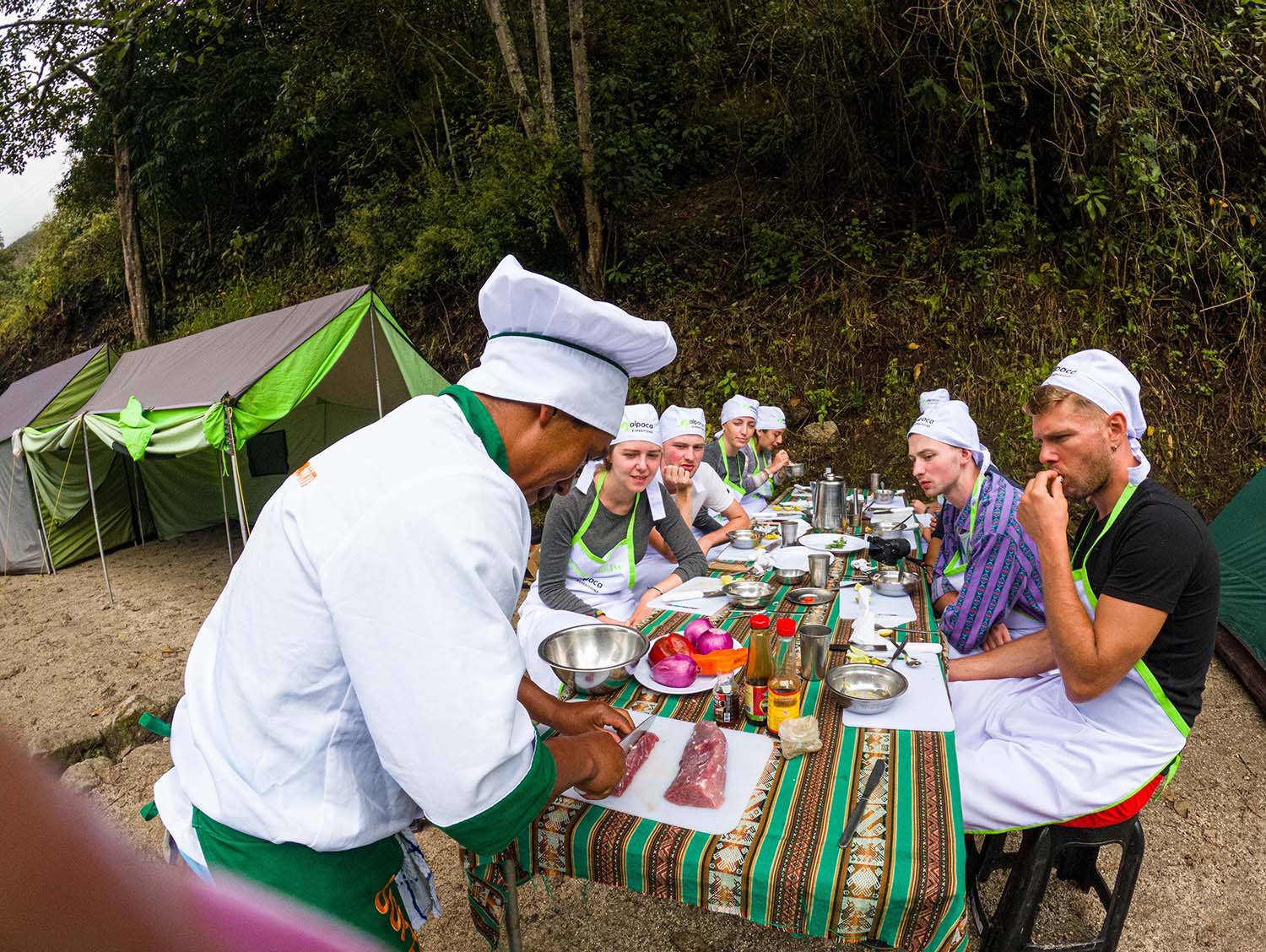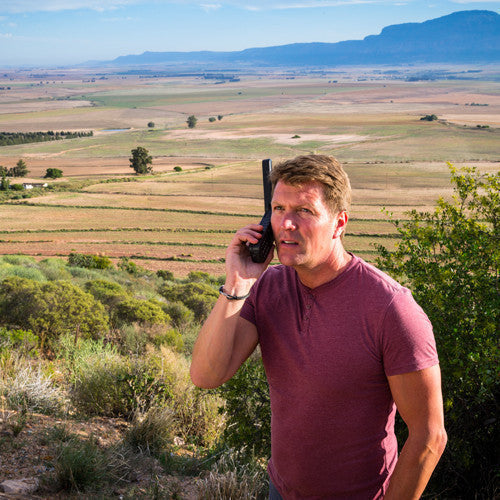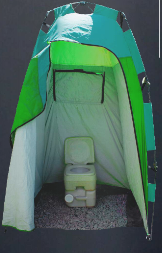SALKANTAY TOUR - THE INCA TRAIL
7 Days / 6 Nights
SALKANTAY TOUR - THE INCA TRAIL 7 Days / 6 Nights
Aditional Especial Touches
Trip Details
-
Highlights of Salkantay Trek & Inca Trail
If you have a little more time to visit Cusco and experience hiking and camping in the Andes, then this is your best option. It will be an amazing hike to Machu Picchu, where you can enjoy the green landscapes that the Andes of Peru offer, along with glacier peaks, lagoons, rivers, cloud forests, Inca sites, Inca villages, and the cherry on top is arriving at Machu Picchu through the Sun Gate on foot after 6 days of activity.
Basically, for the first 4 days, you will be hiking in the Salkantay area, known as off the beaten path with fewer crowds. Of course, this route is not the classic Salkantay route; instead, it’s another trail that leads to the Inca Trail, so there will always be fewer people along the way. Then, on day 4 of the hike, you will enter the classic Inca Trail. You’ll even arrive close to the first campsite of the classic Inca Trail on the first night. The hike will continue along the classic Inca Trail until the Machu Picchu day.
This combination of Salkantay and the Inca Trail allows people to have a complete hiking experience. You will get to see some amazing landscapes along the way. The views of the Salkantay glacier peak and Humantay glacier peaks are magnificent. The views from the campsites are unique. You will be able to do stargazing, especially from the second campsite at Ichupata, which is the highest campsite and closest to the Salkantay mountains.
EXPERIENCE THE HIKE ALPACA EXPEDITIONS STYLE (HIGHLIGHTS):
- Visit Humantay Lagoon: Early in the morning, you will arrive at Humantay Lagoon. This famous turquoise lagoon has become the newest natural attraction where hundreds of people visit each day. During this hike, you will visit in the morning without many people and enjoy the sunrise. This hike will be visited on day 2 of the trek.
- Camp near Salkantay Mountain on the second night, making this hike unique. You will have an amazing time stargazing in a small group, and you may even hear avalanches from the Salkantay glacier.
- Survive the Inka Chiriska pass at 5100 meters above sea level, higher than any mountain on the Inca Trail. Surviving this pass makes this experience unique, and the feeling of hiking in the Andes is incredible.
- Experience the feeling of hiking the Inca Trail with amazing campsites along the way.
- Visit unique Inca sites along the way with your guide and explore each Inca site, all of which were built by the Incas for different purposes and are still intact today, providing valuable insights into Inca history.
- Arrive at Machu Picchu through the Sun Gate on foot after 6 days of hiking in the Andes, making this trek even more rewarding.
- The Salkantay part offers mostly natural beauty and unique views of the glacier peaks and blue lagoons, while the Inca Trail part offers more historical sites to explore.
- Alpaca Expeditions includes personal duffel bags, allowing you to hike with only your daypack.
- All meals, including breakfast, lunch, dinner, and happy hours, are included along the way, except for the last lunch.
- Portable toilets are provided for our groups.
- A shower is available on day 4 before entering the Inca Trail.
- On day 4 of the trek, before entering the Inca Trail, you can separate some of your dirty clothes and send them back to Cusco with the horsemen. For the first 4 days, our team transports logistics by horses, and the rest of the days along the Inca Trail are supported by porters, as it’s not allowed to use animals on the Inca Trail.
- Alpaca Expeditions provides satellite phones, a first aid kit, and oxygen tanks just in case.
- Emergency horses are available for day 2 and 3 for the difficult parts of the trail.
- Join us and have the best trek possible.
- Enjoy visiting villages with Alpacas and Llamas on day 3 of the trek, where you will see local houses with grass-thatched roofs.
DAY-BY-DAY OVERVIEW:
DAY 0 (6 PM AT CUSCO OFFICE):
- Briefing at 6 pm to meet your guide and the group. You will receive your duffle bags to pack for the porters.
DAY 1: CUSCO – MARCOCCASA – SORAYPAMPA (Sleep in a tent)
- Elevation: From 2,900 to 3,800 m
- Walking Distance: 11 km / 6.8 miles
- Considered: Moderate
- Weather: Warm to hot
DAY 2: SORAYPAMPA – HUMANTAY LAKE – ICHUPATA (Sleep in a tent)
- Elevation: 3,500 – 4,300 meters
- Distance: 13 km / 8 miles
- Considered: Moderate to difficult
- Weather: Cold
DAY 3: ICHUPATA – INCA CHIRIASCA PASS – INCA CANAL (Sleep in a tent)
- Elevation: 4,300 – 5,000 meters, then to 37,500 meters
- Distance: 14 km / 8.6 miles
- Considered: Difficult
- Weather: Cold
DAY 4: INCA CANAL – PAUCCAR CANCHA – WAYLLABAMBA – AYAPATA (Sleep in a tent)
- Elevation: 3,750 – 3,000 meters, then to 3,300 meters
- Distance: 14 km / 8.6 miles
- Considered: Moderate to difficult
- Weather: Cold in the morning, warm in the afternoon
DAY 5: AYAPATA – WARMI WAÑUSCA- CHAQUICOCHA (Sleep in a tent)
- Elevation: 3,300 – 4,200 meters (the pass), 3,600 meters (the lunch) and again, 4,000 meters (the pass), 3,600 meters (the camp)
- Distance: 16 km / 9.9 miles
- Considered: Difficult
- Weather: You will experience the four seasons, all in just one day
DAY 6: CHAQUICOCHA – PHUYUPATAMARCA – WIÑAY WAYNA (Sleep in a tent)
- Elevation: 3,600- 2,600 meters
- Distance: 10 km / 6.2 miles
- Considered: Warm and humid
DAY 7: WIÑAY WAYNA – MACHU PICCHU – CUSCO
- Walking Distance: 5 km /3 miles
- Machu Picchu Elevation : 2400 meters
- Sungate elevation : 2700 meters
- Return train Included on expeditions class
- Drop off Included at the hotel
Highlights
Itinerary
-
Day 1: Cusco –Marccoccasa – Soraypampa
Your Inca Trail or Salkantay Tour starts with your Salkantay Trek Tour Guide, Chef, and Porters picking you up from your hotel (Must be located in Cusco) at 4:30 a.m., and you will drive two and a half hours to the trailhead, Marccoccasa (3,300 meters). You will meet your horseman and horses, and have some time to prepare for the day and enjoy your breakfast. You will experience views of the Andes, lush green valleys, and beautiful waterfalls. Today will be moderate in difficulty, but one of the longer days of hiking. There will be a gradual uphill climb lasting about three and a half hours until lunch. After lunch, the hike will be less of an incline and more relaxed walk.
The views along the Salkantay vs Inca Trail change drastically as you go. The trailhead is all green, lush valleys, but in the afternoon, you will be right at the foot of the Humantay snow-capped mountain. You will also experience a temperature drop from warm to cold. Be sure to have your warm jacket, and gloves in your daypack for the cold afternoon. After arriving at the Soraypampa campsite (3,800 meters), your team will welcome you and provided warm drinks and dinner.
Elevation: From 2,900 to 3,800 m
Walking Distance: 11 km / 6.8 miles
Considered: Moderate
Weather: Warm to hot -
Day 2: Soraypampa – Humantay Lake – Ichupata
You will be woken up with hot drinks and breakfast to prepare for the Salkantay Tour. After you prepare for the day, we will show you the alpines micro-climate, and amazing views of the high glacier peaks. They are considered to be the highest peaks around Cusco and the father of the other mountains by many Andean people (Apus means God). You will begin a two-hour climb to the most beautiful blue lake, located at the bottom of Humantay glacier mountain. It’s believed that the Incas used to hold celebration ceremonies for the God of water and the Apus, that surround this peaceful place.
You will then begin your return to the main trail and continue towards your lunch spot at Salkantay Pampa. It will be time to depart from the Humantay peak and enjoy the views of a higher mountain, Salkantay Mountain (6,215 m). You will arrive here around 1 p.m.and enjoy lunch. After lunch, we will have a two hour, steep climb to our second campsite, at Ichupata or Pampa Japonesa (4,200 m). Today will be a cold day of hiking, so be sure to have your jacket, warm hat, sunglasses, and gloves in your day pack. At the campsite, you will be welcomed by your porters to enjoy hot drinks and dinner. Tonight is the perfect night to spot the constellations and the views of Salkantay peak. This site is the closest camp to Salkantay, so it may be possible to hear some avalanches. However, do not let this scare you since they are not close to us. This campsite is the highest, so it should be a cold night, close to zero degrees Celsius.
Elevation: 3,500 – 4,300 meters
Distance: 13 km / 8 miles
Considered: Moderate to difficult
Weather: Cold -
Day 3: Ichupata – Inca Chiriasca Pass – Inca Canal
After tea and breakfast, it will be time to embark on the most challenging, yet rewarding hike, to date. Your guide will lead you up the Inca Chiriasca pass (5,000 meters high), at a steady pace to see the marvelous views of the glacier mountains. Once you have reached the top, there will be hot coca tea, view of the valley and lakes, and even birds like condors and falcons.
Following, you will start descending, or you may take an optional hike to a glacier, which only takes 30 minutes. Afterward, we will continue trekking to your lunch spot, where your porters will be waiting with the traditional hot tea and delicious lunch. For the rest of the day, you will walk downhill, through lush green valleys and winding streams, before reaching your campsite, in a little village of 10 families.
Elevation: 4,300 – 5,000 meters, then to 37,500 meters
Distance: 14 km / 8.6 miles
Considered: Difficult
Weather: Cold -
Day 4: Inca Canal – Pauccar Cancha – Wayllabamba – Ayapata
This day will give you a rare glimpse into the past as you wander through hillside paths, used by traditional Peruvian farmers, living the same way since the time of the Incas. Then, you will arrive at the famous Inca ruins, where your tour guide will provide you with some background on the Incas. After the ruins, your tour guide will point out new and different vegetation, as you move into the high, jungle micro-climate.
Finally, you will reach the classic Inca Trail, where your porters will serve you lunch. The afternoon’s hike will be all uphill until we reach our campsite. Be sure you have your camera ready, with fully charged batteries, as you never want to miss this opportunity to capture the magnificent views of the mountains and enchanting natural waterfalls in the cloud forest.
Elevation: 3,750 – 3,000 meters, then to 3,300 meters
Distance: 14 km / 8.6 miles
Considered: Moderate to difficult
Weather: Cold in the morning, warm in the afternoon -
Day 5: Ayapata – Warmi Wañusca- Chaquicocha
Today will be the longest but most breathtaking day of the Salkantay Tour, with it including the Inca ruins and the cloud forest. After an early breakfast, we will start with a two-hour climb uphill in the Puna area. The Andean Ichu is a dry place with little vegetation, but you can see llamas here. When we reach the peak of Dead Women´s Pass (4,200 meters high), you will have some time to rest and enjoy the glacier peaks and spectacular mountains, nearby. Afterward, we will start descending on the rock-paved trail towards our lunch spot. Along the way, you will be able to observe Orchids and other flowers.
Please try to walk slow and be cautious of nature. This section is a perfect spot to watch hummingbirds. After lunch, we will begin climbing uphill for two hours to reach the second peak. Halfway through your journey, you will visit the Inca ruins, called Runcu Raccay.
This place has been said to function as a watchtower from its oval shape and position overlooking the valley. After crossing over the second peak (4,000 meters high), we will start descending for one hour to the lake called Yanaccoha, where the Incas organized ceremonies for the Goodness of the water. Then, you will arrive at the famous cloud forest and also one of the most beautiful Incan ruins called Sayacmarca. Sayacmarca is where you can observe the original Inca houses, water fountains, water channels, and the most spectacular views of the valley.
After the ruins, it will take you about 30 more minutes to reach our campsite, called Chaquicocha. Once again, you will have an opportunity to see different types of flora and fauna since you will be in the high jungle.
Elevation: 3,300 – 4,200 meters (the pass), 3,600 meters (the lunch) and again, 4,000 meters (the pass), 3,600 meters (the camp)
Distance: 16 km / 9.9 miles
Considered: Difficult
Weather: You will experience the four seasons, all in just one day -
Day 6: Chaquicocha – Phuyupatamarca – Wiñay Wayna
Today is the most relaxed day of the Salkantay tour. In the morning, you will have views of the surrounding Andes Mountains, and the Pumassillo mountain glacier peaks. There will only be about five hours hiking, including the three Inca ruins on the way to our campsite. The first ruins are called Phuyupatamarca (cloud level-town) and are two hours from the campsite. It is impressive to observe the lovely platform and houses where the Incan nobles studied astronomy. The second set of ruins are on the hillside among terraces. It was perhaps an Incan agricultural experiment station.
You will also have views of the sacred valley, and the river of Urubamba. Finally, you will reach the last campsite, called Wiñay Wayna (2,600 meters), where you will leave your day packs and walk for five minutes to reach the most beautiful Incan ruins, along the Inca Trail to Machu Picchu. This place is close to a village where you can enjoy the beauty of the water channels, terraces, and temples, and learn about the religious ceremonies that used to occur here.
After lunch, you will have an opportunity to take a cold showers, followed by a free afternoon to explore the most beautiful Inca site, Wiñay Wayna. Later in the afternoon will be your last happy hour and dinner, topped with a small presentation from your porters to say a final goodbye. They will head back to Cusco the next day, while you continue your journey to Machu Picchu.
Elevation: 3,600- 2,600 meters
Distance: 10 km / 6.2 miles
Considered: Warm and humid -
Day 7: Wiñaywayna – Sun Gate – Machu Picchu – Aguas Calientes – Cusco
Today marks the most important day of your journey: the long-awaited visit to the citadel of Machu Picchu, one of the New Seven Wonders of the World.
We will wake up very early at 3:00 a.m. at the Wiñaywayna campsite. Breakfast will be served at 3:30 a.m., and at 4:00 a.m., we will begin a short walk to the park ranger checkpoint, where we will wait in line until the gate opens at 5:30 a.m.
Why so early? Our porters must walk approximately 1 hour from Wiñaywayna to the railway at Kilometer 107 to catch the only daily train that passes at 5:30 a.m. If they miss it, they would have to walk all the way to Km 82 or wait until the next day. Out of respect for their effort, all groups wake up early so the porters can make it on time. Your duffle bags will be transported by the porters to Aguas Calientes and left at a restaurant where you’ll later have lunch.The checkpoint at Wiñaywayna opens at 5:30 a.m. because this section of the Inca Trail leading to the Sun Gate is narrow and, for safety reasons, park rangers do not allow tourists to hike it in the dark.
The hike from the checkpoint to the Sun Gate (Intipunku) takes about 1 hour, during which you’ll enjoy lush flora such as orchids and cloud forests. Just before arriving, you’ll encounter the steep “Gringo Killer” stairs, a section of about 20 Inca steps.Upon reaching Intipunku, you’ll enjoy your first panoramic view of Machu Picchu in all its glory. This gate served as the main entrance to the citadel during Incan times and also as a solar observation point during the spring solstice, when sunlight passed through the gate and illuminated the Sun Temple window.
We will spend 15 to 30 minutes at the Sun Gate, depending on the weather, and then continue for another hour of gentle downhill hiking to reach Machu Picchu. Along the way, you’ll see spectacular views of the citadel, Huayna Picchu, the Urubamba River, and the surrounding valleys.At approximately 7:30 to 8:00 a.m., we’ll arrive at the main lookout point of Machu Picchu, the iconic spot where postcard photos are taken. You’ll have about 30 minutes to enjoy the view and take photos with help from your guide. For many, this is the moment when the dream of “surviving the Inca Trail” comes true.
After taking pictures, we’ll briefly exit the citadel to use the restrooms (S/2), and anyone with large backpacks can leave them in the storage area (US$5).
We will then re-enter to begin a guided tour along Circuit 3, which covers the most iconic areas of Machu Picchu: temples, palaces, religious houses, water fountains, and astronomical observatories. Your guide will explain every detail, and you’ll also have time to take photos.After the tour:
Those with a ticket for Huayna Picchu will head to the entry checkpoint and hike up independently, as guided tours are not allowed on that trail.
The rest of the group will continue the tour through other sectors such as the Temple of the Condor, followed by about 30 more minutes to explore and take pictures.
At the end of the visit, everyone will head to the exit to take the bus to Aguas Calientes and enjoy lunch at a local restaurant.After lunch:
At 2:55 p.m., you will board the tourist train to Ollantaytambo (approx. 1 hour 45 minutes), with comfortable seats and impressive views of the river and mountains.
Upon arrival in Ollantaytambo, a private Alpaca Expeditions bus will take you back to Cusco (approx. 2 hours).
You are expected to arrive in Cusco around 8:30 p.m., where your stored luggage will be returned to you and you’ll be dropped off at your hotel.Walking Distance: 5 km /3 miles
Note: Before the government enforced the new legislation about protecting the Inca Trail, horses were the main transport to carry equipment from the trail head to Wayllabamba. Since they banned the horses, we have replaced them with out porters (on the Classic Inca Trail). You will have the same tour guide and cook throughout your tour. All meals are prepared on site, so that you will always have fresh food.
Inclusions
-
Included
- Professional Guides: All of our Salkantay Tour guides studied English and tourism at Cusco National University. They all grew up in the Cusco region, and are committed to teaching others about their heritage. They are fun yet professional and will ensure you are safe and happy.
- Permits: As soon as we receive your details and your Salkantay Tour deposit, we will purchase your permits (pending availability, check our Inca Trail Availability). These permits are for a specific date and in your name. They can´t be changed once confirmed. Only your passport number is allowed to be updated. The permit includes an entrance to Machu Picchu.
- Briefing: The night before your Salkantay Tour, you will come to our office for your briefing. You will receive your duffel bag that will stay with your porters, while you hike. This bag should not exceed 7kg/14 lbs and does need to include your sleeping bag and air mattress.
- Porters: We include a personal porter, who is responsible for carrying your duffel bag. There is no additional fee for this. You will not have access to your duffel bag until your evening campsite.
- Transportation: You will have transportation included in this trek. You will be picked up directly from your hotel around 4 a.m. and brought to the trailhead, Marccoccasa (3,300 meters). Also included will be the Expedition Train from Aguas Calientes. You may also upgrade to the Vistadome Train for $75 per person. Once you arrive at the train station, we will take you back to your hotel in Cusco. Additionally, your round trip bus ticket from Aguas Calientes to Machu Picchu will be included.
- Equipment: Alpaca Expeditions has the best equipment. We use Eureka Timberline 4 tents that are shared by only two people. You will have a spacious dining tent to enjoy your meals in.
- Food: The Alpaca Expeditions chefs cook delicious meals that many previous trekkers have loved. We honor all food restrictions, so be sure to add any that you have on your booking form and let your guide know at your briefing. Food is typically all served family-style.
- You will enjoy breakfast, lunch, and dinner each day during the trek, along with a happy hour featuring tea and snacks. Each morning, a snack will be provided for you to enjoy along the hike. Your last meal with the chef will be breakfast on day seven. Lunch on the final day is not included.
- Water: Beginning from your first lunch until your last breakfast, Alpaca Expeditions will supply all the water needed. This water is boiled, filtered, and then cooled before distributing. You must bring your water bottles and or camelback. We recommend carrying about 3L worth. You will be able to refill your water at each meal.
- First Aid: Every Alpaca Expeditions guide has received training in first aid from a physician. We conduct mandatory training sessions every February, which every single Alpaca tour guide must attend. Your tour guide will always have a first-aid kit for basic medical problems (traveler’s diarrhea, cuts, scrapes, etc.) and oxygen. We will get you off the trail as quickly and comfortably as possible, if needed, and ensure you get directly to a clinic for treatment.
- Extras: We believe it´s the attention to small details that separates us from other tour companies. Every trekker receives a small pillow to sleep with, a foam mattress for insulation, a day pack cover to protect their things while hiking, and a rain poncho. We will work hard to create your best vacation.
- Satellite Phones: Our top priority will always be the safety of our clients and our team. While all our guides are prepared and trained to deal with most issues clients have on the mountain. Being a phone call away from any doctor, hospital, or friend helps everyone feel assured that they are safe. Radios, which all our guides have, are limited in how far they can reach, so Alpaca Expeditions has added Satellite Phones to every trek. Every guide will have a fully charged phone that can be used anywhere on the mountain to connect us anywhere in the world. And they can be used by our clients for non-emergencies as well. While they are not cheap to use, they are available just in case you need to check in on the puppy you left at home with grandma.
-
Not Included
- Rentals: Every trekker needs a sleeping bag when camping. Inflatable air mattresses and walking sticks (with rubber tips) are optional but encouraged. If you don’t want to bring any of the above, they are all available for rent:
Sleeping Bag: $35
Inflatable Air Mattress: $30
Walking Sticks (Pair): $30 - Huayna Picchu: Huayna Picchu is the mountain that stands next to Machu Picchu. It is a 45-minute hike to the top. Going back down is quite steep if you are scared of heights. You would do this after your tour of Machu Picchu. The cost is $75. Arrangements need to be made at least one month in advance due to popularity. Please understand that the weather is out of our control.
- Rentals: Every trekker needs a sleeping bag when camping. Inflatable air mattresses and walking sticks (with rubber tips) are optional but encouraged. If you don’t want to bring any of the above, they are all available for rent:
Price
-
We can depart any day of the week, as long as permits are available. Please remember, permits are needed for your fourth day.
- $1,150 Per person
-
Student Discount
- $35 off per person
Student discounts apply to anyone who has a valid UNIVERSITY STUDENT CARD at the time of the trek or who is 17-years-old or younger. For those using a University Student Card our under 17-years-old, we need to see a copy of their card or passport at the time of booking to receive the discount.
Please send all to info@alpacaexpeditions.com.
More Information about STUDENT CARD
-
Additional Item
As you see in our Additional Options for several optional upgrades you can include in this trip. Below is a quick list of prices:
Huayna Picchu: $75 per person
Vistadome Train (one way): $75 per person
Travel Info
-
Getting to Cusco
The airport in Cusco currently is only for domestic flights, so all international travelers by plane must disembark in Lima and go through Customs. Even if your flight to Cusco is the same day by the same airline carrier, you must grab your bags in Lima and then check them back in.
The best way to get to Cusco is by air, and there are several options in airlines. LAN tends to be the most expensive but has the most options and flights. Expect delays or flight cancellations. Due to the high altitude of Cusco, it tends to be difficult to land, and any acclimate weather will stop air traffic. Bus travel is always available, and while the trip can be long, especially from Lima, the buses in Peru are very well maintained and comfortable. This option is strongly encouraged if coming from a city closer to Cusco, like Puno. Lima buses will take about 20 hours to arrive.
-
Luggage Storage
Any extra luggage you have with you can be left safely in Cusco at either your hotel or with us at the Alpaca Expeditions while you trek. We will store your luggage on the morning of your trek and return it once you are back in Cusco. Make sure your bags have tags on them, so they are easy to locate.
-
Altitude
As soon as people book their trip to Peru, specifically Cusco, they start wondering about altitude sickness. The air at high altitudes contains less oxygen than at sea level and forces your body to work harder to get the oxygen it needs. Over several days at high altitude, your body adjusts to the lower amount of oxygen in the air. For this reason, we always recommend spending at least two days in Cusco before beginning any trek in the Andes. Cusco is a marvelous city with lots to do, so if you have more time to acclimate, you won´t be bored.
With altitude sickness, you may first feel like you have the flu or a hangover. You may have a headache, tiredness, loss of appetite, nausea or vomiting, dizziness, trouble sleeping, trouble breathing during exercise. If any of these effects become severe, please contact our office, and we will help you get to a doctor.
Most of the time, these symptoms will be mild. We always recommend easing into activity slowly, allowing your body to adjust. Drink plenty of fluids such as water or coca tea. Coca tea has been used since ancient times to help prevent altitude sickness. Leaves from the Coca Plant contain alkaloids that help bring oxygen into your blood, helping your body avoid the effects of altitude sickness. Avoid drinking a lot of alcohol and coffee, since they will cause you to urinate more often and become dehydrated. Avoid smoking. Smoking makes it more difficult for your body to get oxygen. Avoid sleeping pills. They may cause shallow breathing at night, making it more difficult for your body to absorb oxygen while you sleep.Remember, the trek to Machu Picchu is not a race. Even those in the best shape will suffer from altitude sickness if they race to the top of the mountain too quickly. Go slow, and it will give your body time to adjust to the elevation. Your healthcare provider may prescribe medication such as Acetazolamide and Dexamethasone to help prevent altitude sickness. Start the medicine two days before you get to high altitude, and continue to take it while you are at high altitude. You must remember that this is your holiday and you do not want to stress out about the possibility of getting sick from the mountains. Do everything slowly and drink lots of water, and enjoy the coca tea. If anything does happen and you, unfortunately, get sick, let your guide know right away. Alpaca Expedition guides are trained to help you get through it.
-
Weather
Of course, the weather is unpredictable. Typically the dry season in Cusco is from April through October, but this does not stop rain from falling in June or the sun from coming out in December, so just be prepared. No matter what month you are doing the trek, make sure that you have rain gear that includes a waterproof jacket, pants, poncho, and waterproof gloves. Many people forget about gloves, but being cold and wet makes hiking very unpleasant.
Also, be ready for four seasons. Treks in the Andes involve various microclimates, and you will need to be prepared for each one. Layers are always key since they are easy to adjust to different temperature changes. Be prepared with a warm packable down jacket since the evening will be cold.
-
First Aid
Every Alpaca Expeditions guide has received training in first aid from a physician. We conduct mandatory training every February, and every single Alpaca guide attends. When guiding you, they will have with them a first aid kit for basic medical situations (traveler’s diarrhea, cuts, scrapes, etc.) and oxygen. They will take good care of you.
In case something unexpected happens, and you feel you can no longer complete the trek, they will figure out the safest and quickest way off the trail and to a clinic. You will never be left alone; you will have a member of the team escort you every step of the way until safely with a doctor. When you are feeling up to it, we will make sure that you still have the chance to visit Machu Picchu and re-connect with your group. This way, you can finish your trip, traveling by train comfortably.
-
Travel Insurance
To protect your travel investment, we highly recommend the purchase of travel insurance. Getting travel insurance before you leave home is strongly encouraged and very easy. We work with a great agency in the United States, that has helped to make it easy and affordable. What an excellent way to protect yourself while you are visiting Peru.
If interested in booking through our trusted partner, Ahart, Frinzi & Smith, CLICK HERE.
-
Environmental Impact
Alpaca Expeditions uses biodegradable soap and transports all our garbage back to Cusco. Our porters are trained to look after the trail and pick up any waste from other groups as well. We also use environmentally-friendly portable chemical toilets that allow us to carry waste out. We believe in leaving no footprint behind.
-
Community
Alpaca Expeditions is proud of the work we do for our community, as this is the main focus of our company. We have worked with villages directly to help supply them with the needs their families were missing. We have supported local schools by giving them computers and books. Alpaca Expeditions also sponsors a teacher at the village where most of our porters come from and ensures their children have the best opportunity for education.
We buy all our food from local farmers and markets and serve the freshest ingredients. We provide English classes for all our team: guides, porters, chefs, and drivers. We are also building a house for our porters. By giving them a safe and comfortable place to stay before and after our treks, they no longer need to sleep on the floor at a friend’s house.
And twice every year we bring our porters and their families to Machu Picchu. The men and women who work tirelessly have never visited the Lost Citadel of the Incas. So that makes this trip our favorite to-do. It is an honor to show them this place.
We are always looking to do more and for partners. Please let us know about your ideas, and we will work to help.
-
Personal Porter Included
All of our camping treks include porters, who are responsible for carrying and setting up all equipment. They will additionally carry the duffel bag you receive at your briefing the night before your trek. Each duffel bag can not exceed 7kg/14lbs and must include your sleeping bag and air mat. Alpaca Expeditions gives each porter a proper uniform, salary, and insurance. They are the backbone of our company.
Packing List
-
ESSENTIALS
- Passport
- Valid, STUDENT CARD (if you booked as a student)
- Immigration Card (given on the plane as you enter Peru)
- Good daypack (the smaller, the better)
- Water storage: Water reservoir like Camelbaks are encouraged – but enough for at least 2-3 liters.
- Comfortable hiking boots (lightweight with good soles)
-
FOR YOUR DUFFEL
Porters will carry up to 7 kg of your personal items. This must include your sleeping bag and air matt (if you bring/rent one). From us these two items weigh 3.5 kg.
- 4-5 wicking t-shirts
- 3-4 hiking pants
- 7 sets of undergarments.
- 7 sets of hiking socks
- 1 Fleece
- 1 Warm, down jacket: gets very cold at night
- 1 Rain jacket and pants
- 1 sun hat
- 1 wool hat
- Headlamp: essential
- Waterproof gloves (even if they are ski gloves, take them)
- Comfortable shoes for camp
- Walking boots
- Quickdry towel. We provide small ones, you might enjoy something a little larger.
- Small bottle of soap: we provide warm water each day to clean – might make you feel fresh if you had a little soap.
- Battery Charger: There is no place to plug in while trekking!
- Large plastic bags: to help organize and keep clean from dirty.
- Sleeping bag: Recommend down bags for -10C at least
- Earplugs
-
TOILETRIES
- Sunscreen
- Face moisturizer
- Bug spray
- Handsanitizer
- Wet wipes
- Toothbrush and paste
- Toiletpaper
- Personal medication
- First aid kit: band aids, moleskin, etc.
-
INSIDE YOUR DAYPACKS
Daypacks can be any size for hiking, but we always recommend the smaller, the better. Inside Machu Picchu, no bag larger than 25L will be allowed in. If larger, you will need to store outside citadel gates. Some items are listed above and can be a personal choice if you want in daypack or duffel.
- Water: we supply clean water at each meal. You are responsible for your first morning of water only as we won’t have time to filter water until your first lunch.
- Sunhat
- Rain gear
- Fleece
- Camera
- Music (IPhone)
- Handsanitizer
- Toilet paper and small plastic bag for waste
- Extra Money for Souvenirs, Drinks & Tips
Salkantay Trek + Inca Trail 7D/6N
Please fill in our BOOKING FORM carefully with your correct personal details.
The Alpaca Difference
Alpaca Expeditions is a 100% peruvian, indigenous owned company. Started by Raul Ccolque, a former porter and tour guide, Alpaca Expeditions separates ourselves by our dedication to both our customer and our team. We work very hard to make sure that all our clients needs are taken care of throughout the tour with us. At the same time, we never forget about our brothers and sisters working tirelessly for us to make all of this possible. Responsible and sustainable tourism that gives as much to our community as to our clients.
Meet the AE Trekking Team!
Everyone on the Alpaca Team is from Cusco region, living the traditions and history they share with you while on one of our tours. Our guides are all graduates of university studying tourism, history and english. Our chefs are trained every February by a professional cooking team learning new meals, adding varieties of entrees for all types of eating. And all our porters are from HUARQUI, HUACAHUASI, PATACANCHA, QUISWARANI, CANCHACANCHA, QUEYUPAY, UMACHURCO and CCACCACCOLLO villages, very often working this job on top of maining their farms back at home. Most of our team has been with us for years, as we have the most loyal, hard working, happy employees in Cusco. We know how lucky we are to have the best team trekking and you will immediately fall in love with all the men and women who call Alpaca Expeditions their home.
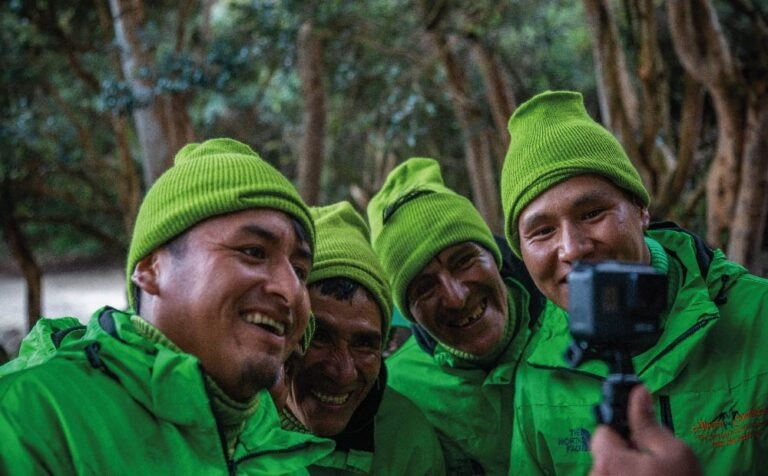
AE súper porters
Our Porters represent the Peruvian people, both men, and women who are at the heart of our...
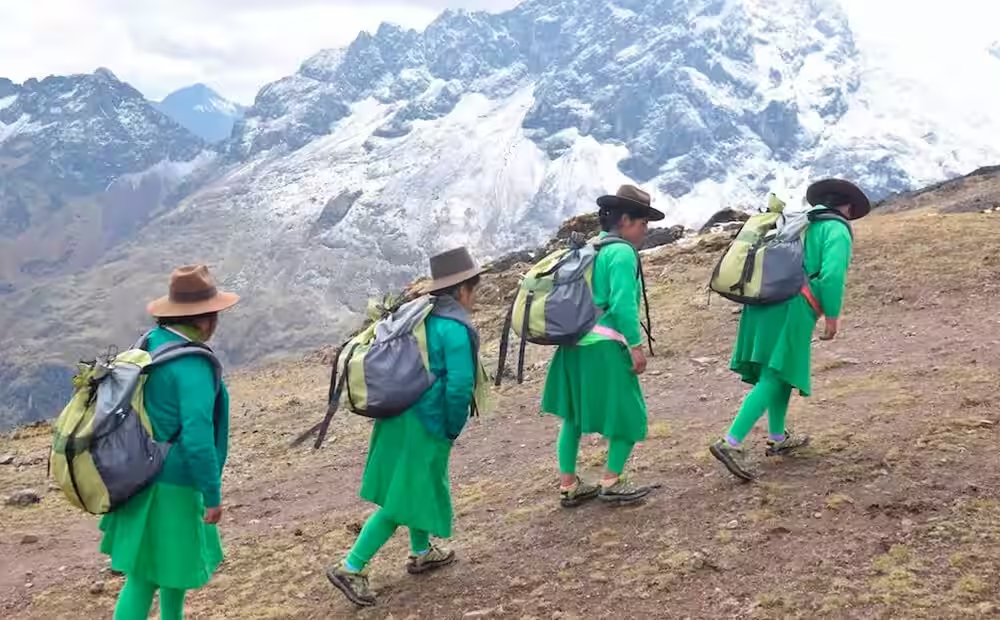
Equality Matters
Alpaca Expeditions aims to promote gender equality and empower women, hiring first Peru Wo...
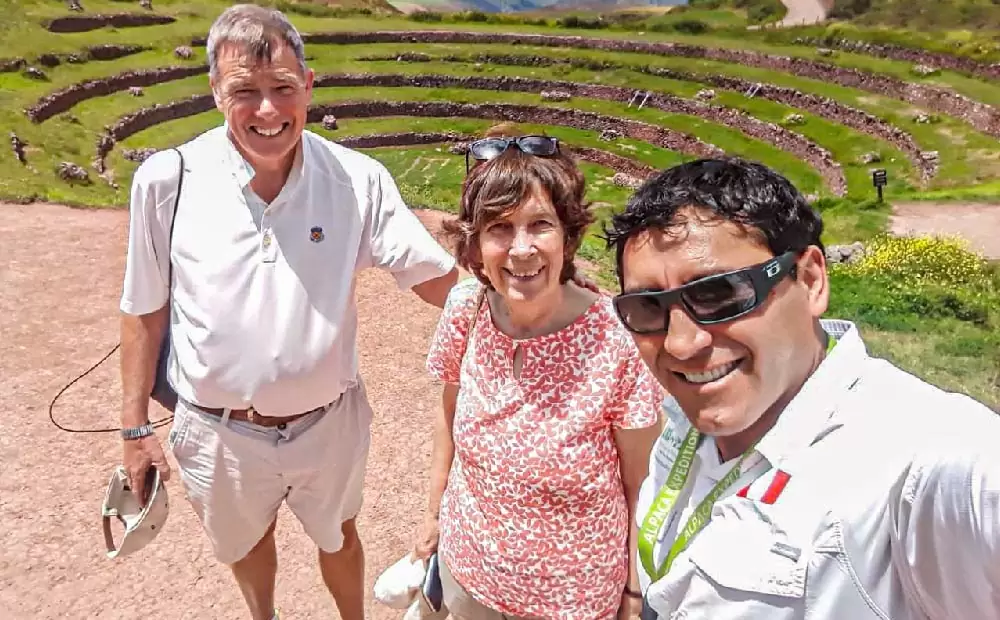
Our Guides
Travelling and trekking along the mountains is one of the best activities in the World. Co...
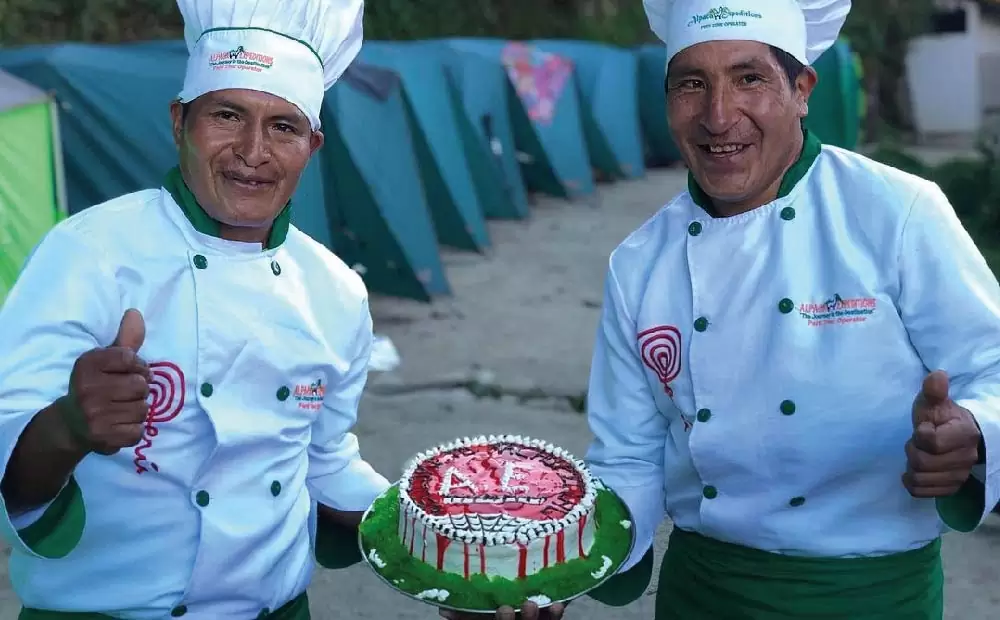
Our Chefs
Trekking along the mountain on your way to conquer Machu Picchu is a once in a lifetime ex...
What do we do for our porters?
Alpaca Expeditions would not be where we are today without these hardworking men and women. We could not imagine a harder job and our team does it smiling. We do our best to thank them for their hard work and loyalty by doing as much as we can to make their lives and their families lives better. All our porters receive all their equipment for free from warm winter hats to proper hiking boots. They sleep in proper tents and are given warm sleeping bags for night. They enjoy the same food we serve our clients and all leftovers are donated to their families. We visit their villages with doctors and dentists, donate school supplies and sports equipment. And our favorite time of the year is when we bring a group of porters and their families to Machu Picchu to visit the ruins for the first time.

AE súper porters
Our Porters represent the Peruvian people, both men, and women who are at the heart of our company. It is not possible to ...

Equality Matters
Alpaca Expeditions aims to promote gender equality and empower women, hiring first Peru Women as Porters opening the door ...
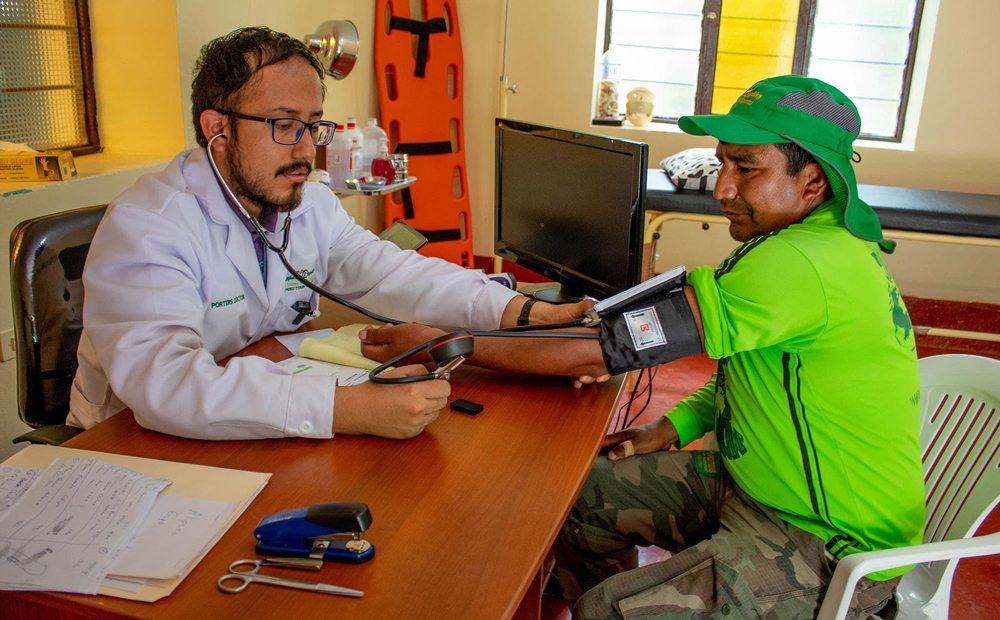
Free Medical Assistance to Porters
In 2019, we hired our first Alpaca Expeditions Medical Doctor to help tend to our guides, drivers, chefs…
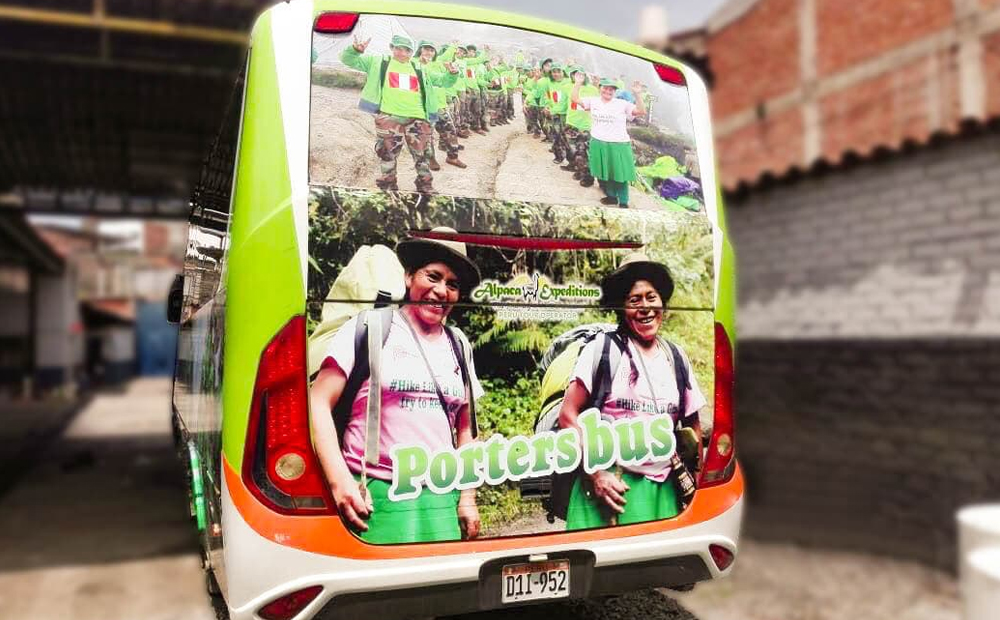
Our Porter’s bus
We treat our porters with the same dignity and respect as we do our clients. Just as our clients enjoy our…
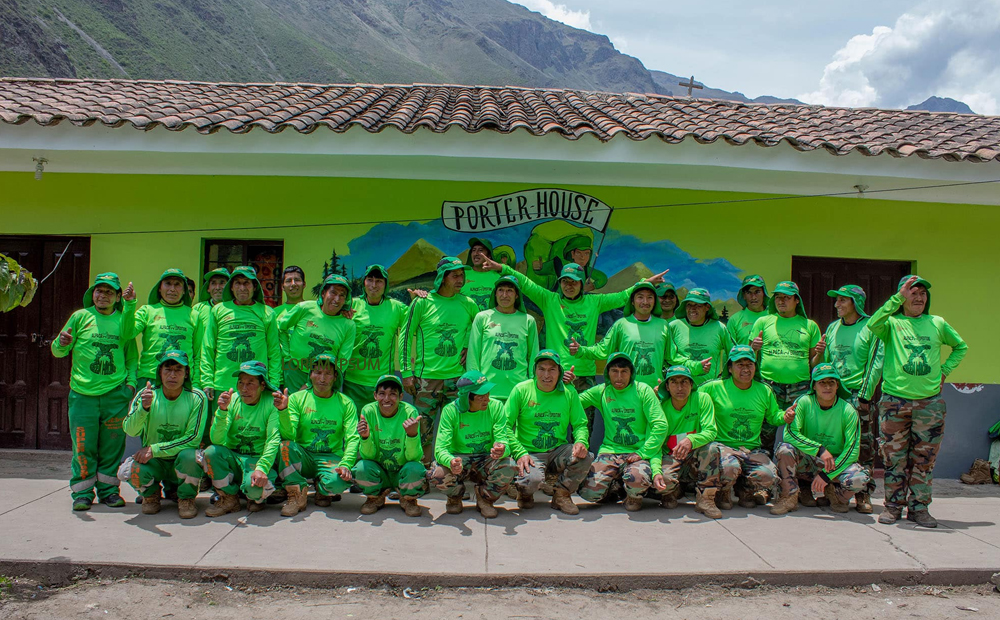
Our Porter’s House
As we mentioned above, our Porters like many Peruvian people come from distant villages to work our treks…
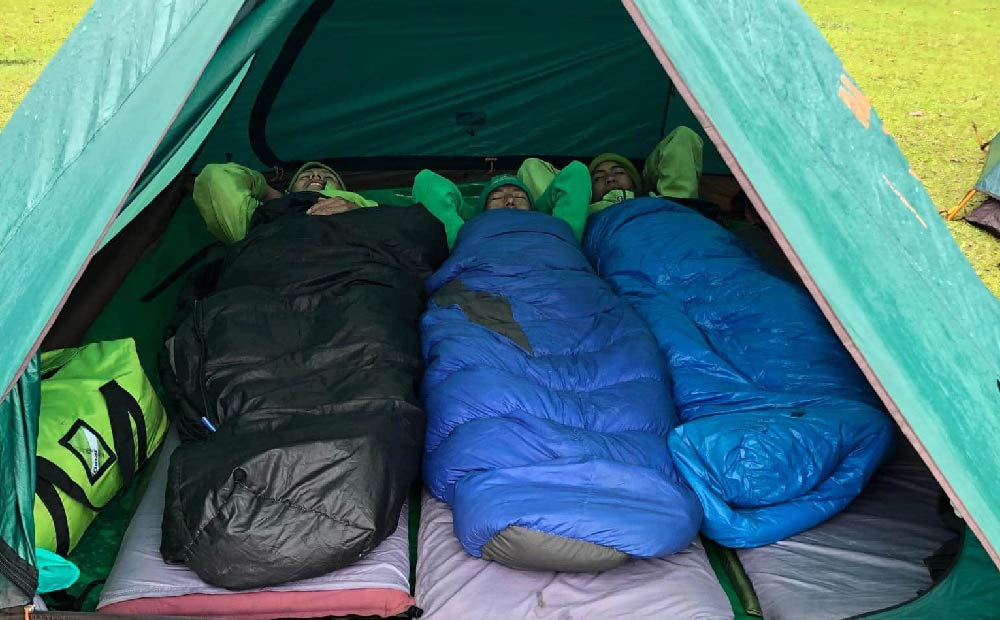
Tents and Sleeping bags
Again, this is something unique that Alpaca Expeditions provides, and sad others are not doing. We supply…
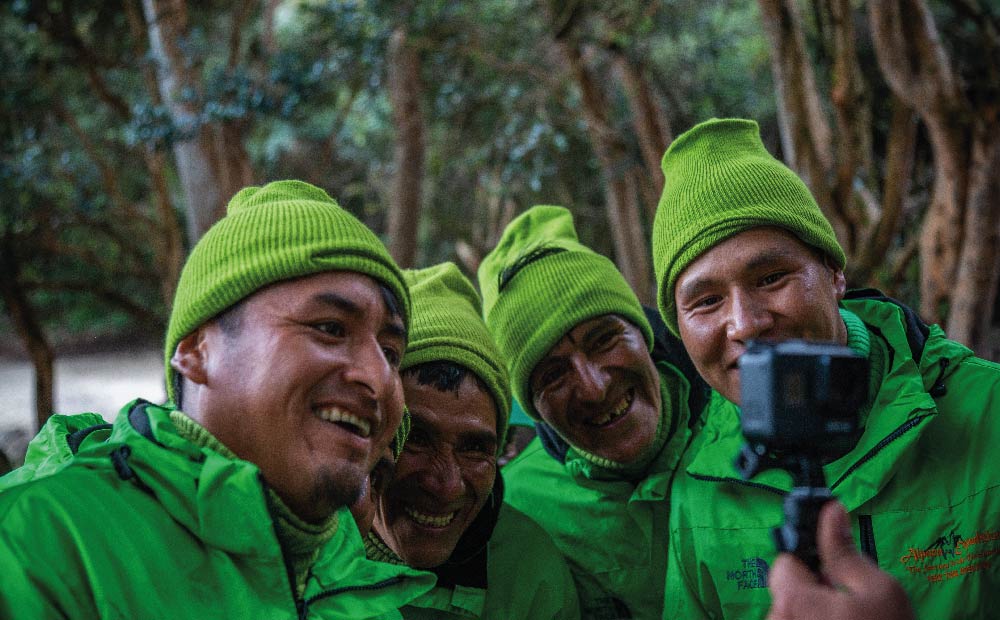
Proper Equipment for our Porters
Every porter of ours receives proper equipment. That includes moisture-wicking long/short sleeve shirts…
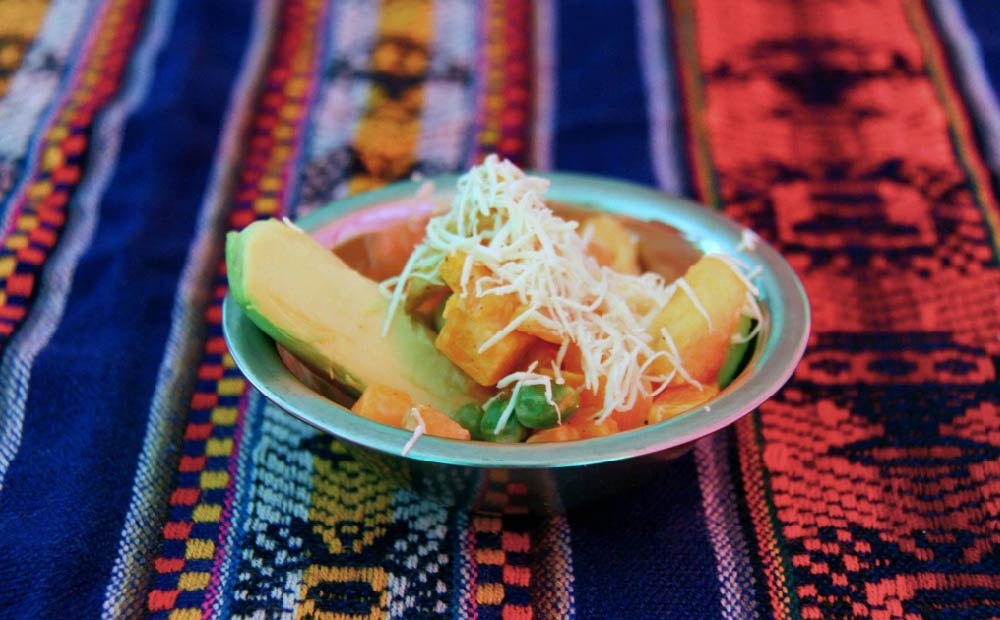
Nutritious Meals for our Porters
A general comment from trekkers on an Alpaca Expeditions tour is that we serve too much food. Well…
Videos of our Porters
Extra information
Alpaca Expeditions is always ready to make your trip safe and as easy as possible for you. Because these trips are a bit more complicated than your typical tour, we have put together some notes on logistics, storage, and even recommendations on where to stay in Cusco. And of course our team is ready to answer any other question, as we promise to be your partner from the moment you first contact us to our last goodbye in Cusco.
Alpaca Expeditions Recognitions
ISO (International Organization for Standardization)
In the pursuit to stand out from the rest, Alpaca Expeditions has obtained four ISOs plus our carbon footprint certificate to date. These achievements result from our efforts to implement the internationally-recognized integrated management system. They also represent our commitment to all of our clients and staff of operating sustainability and responsibility in every way possible.

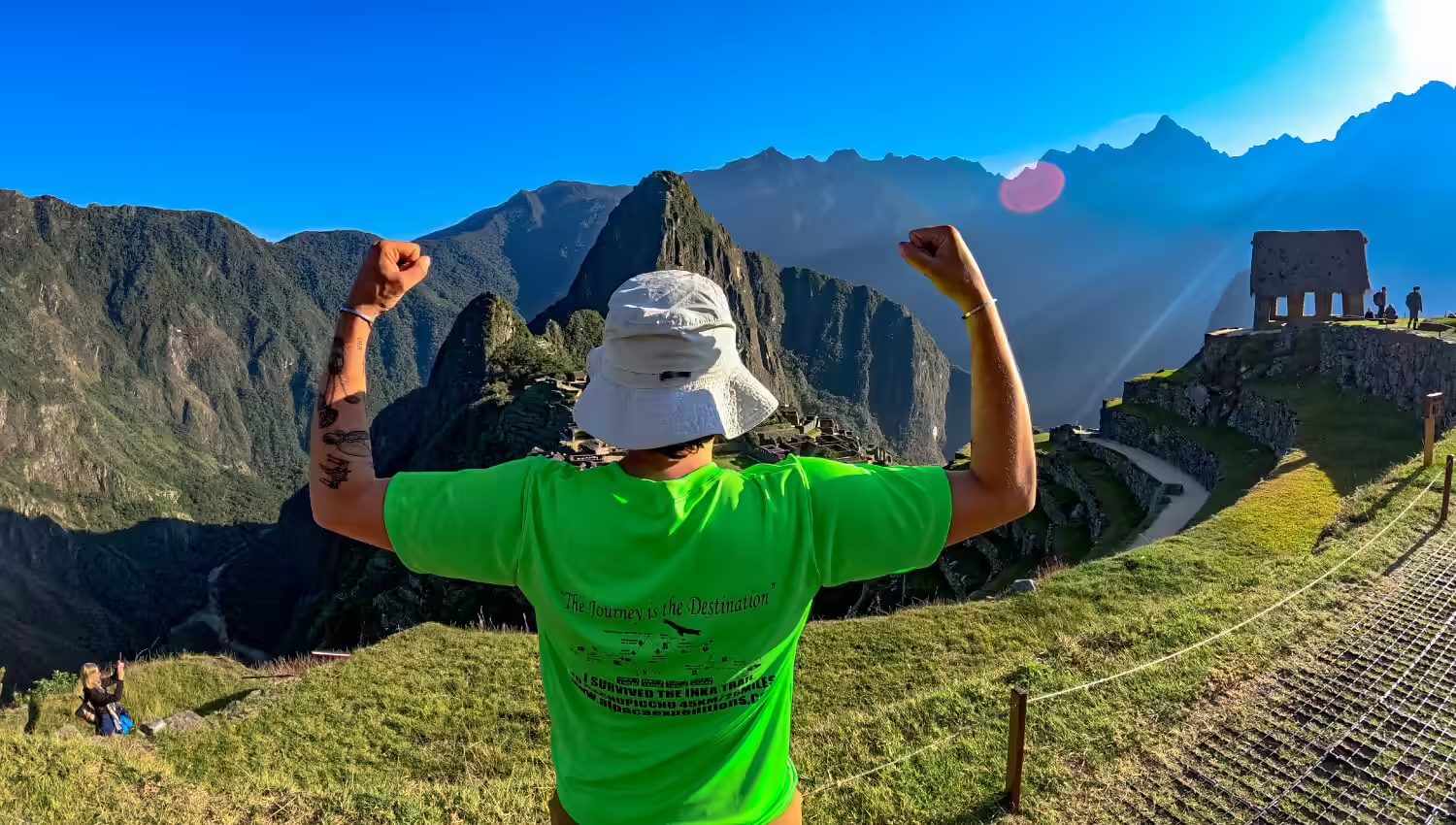
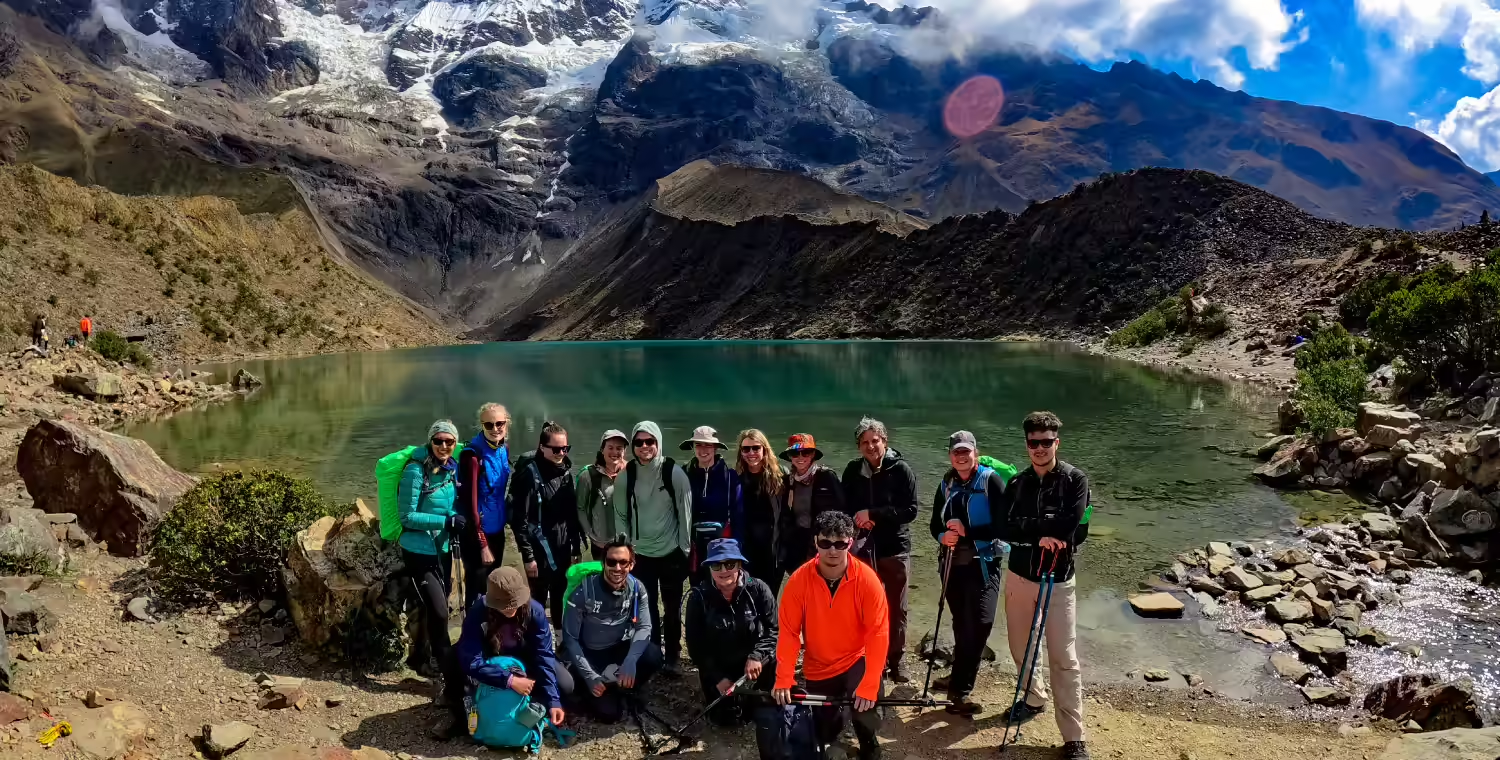
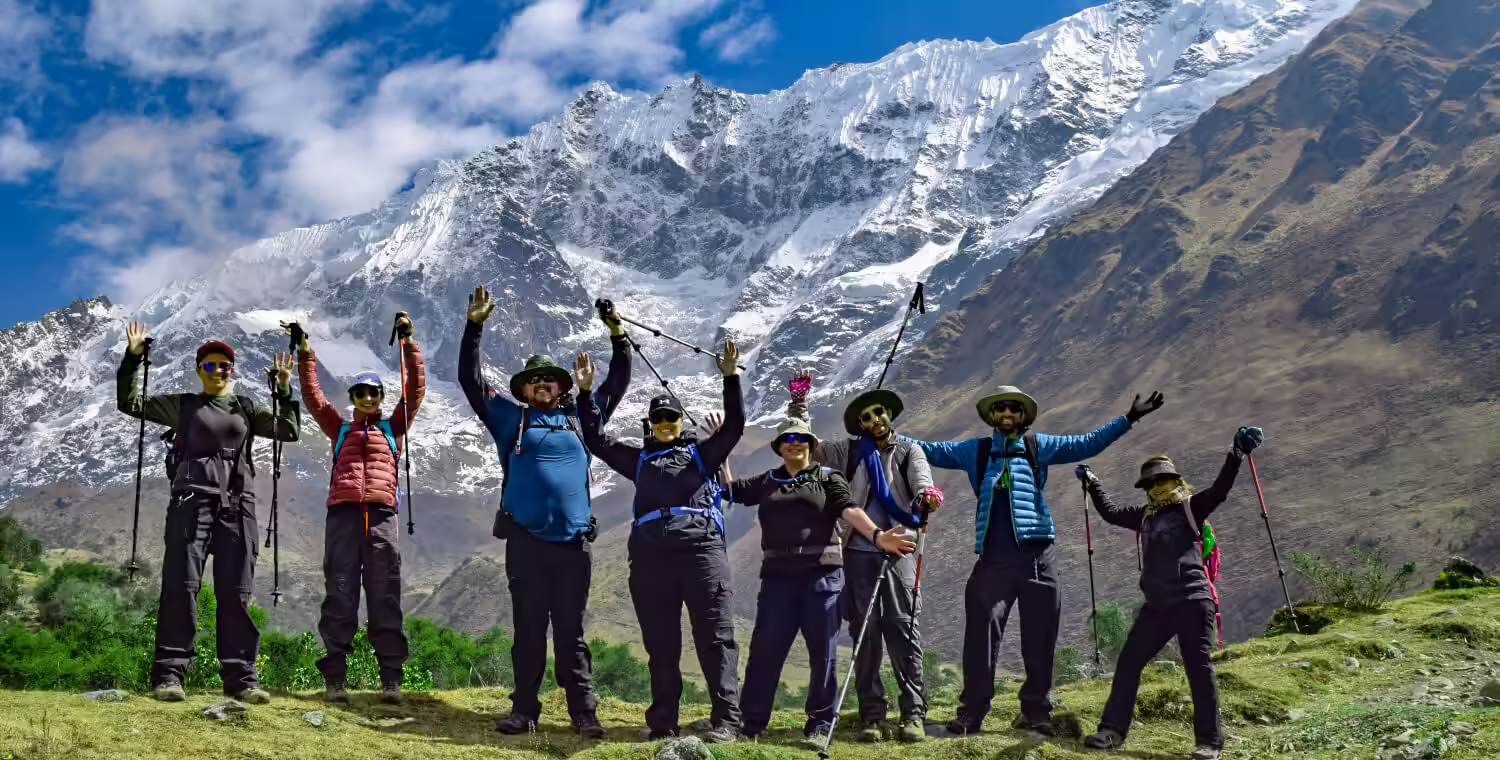
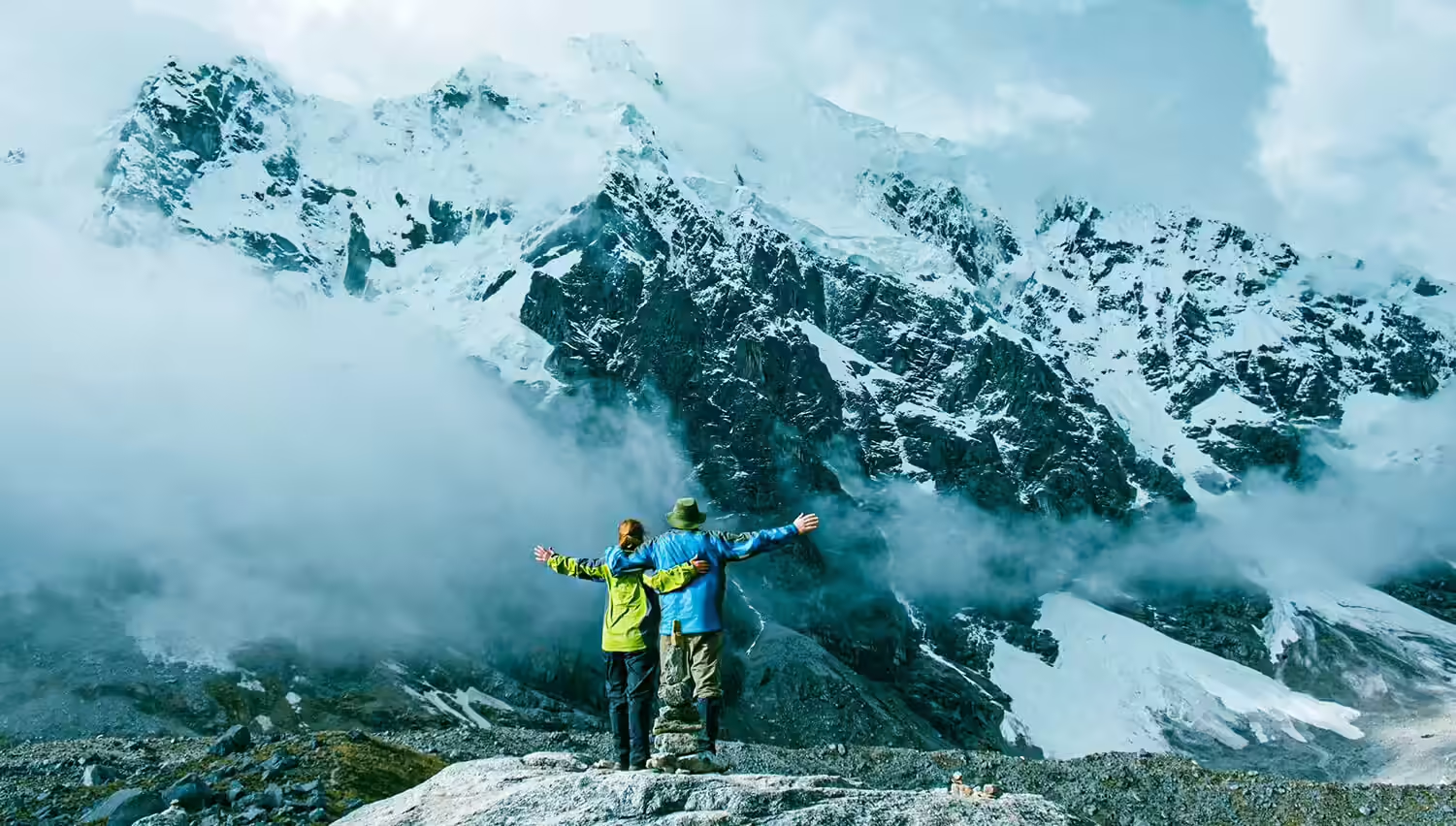
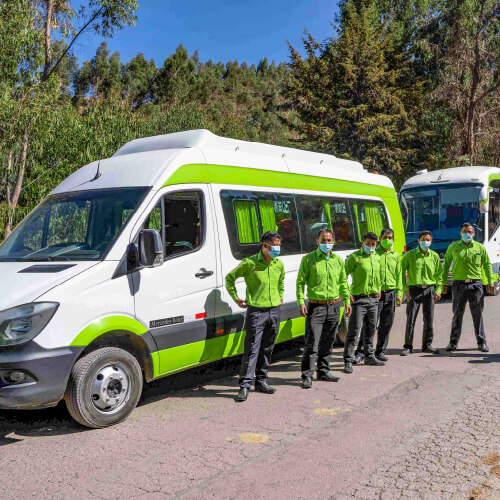
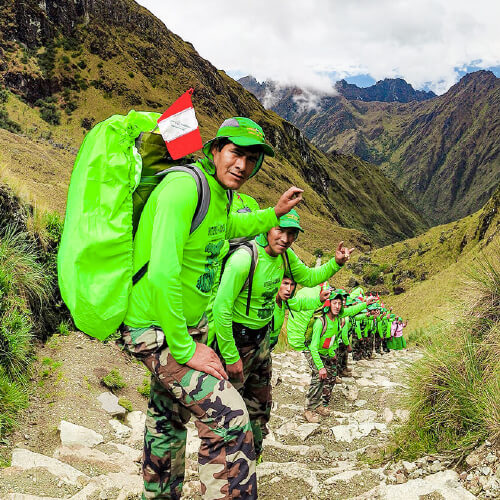
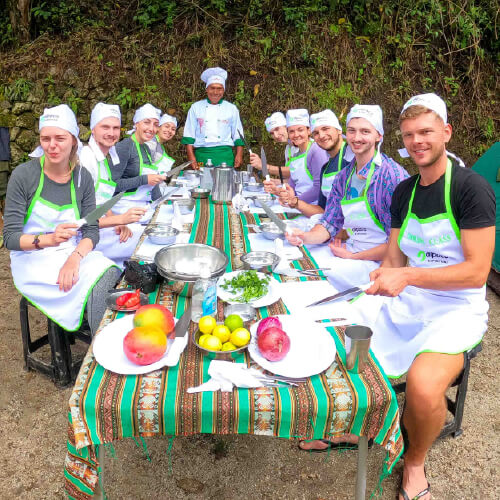
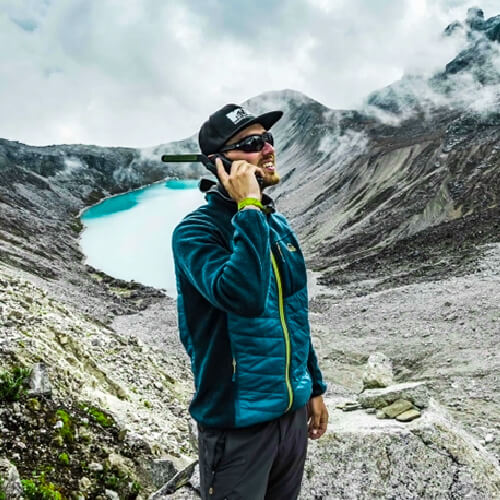
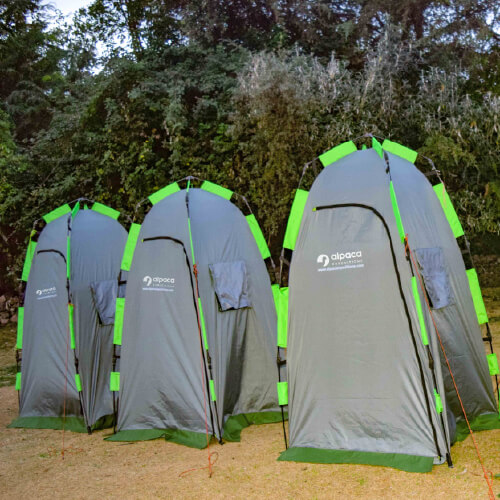
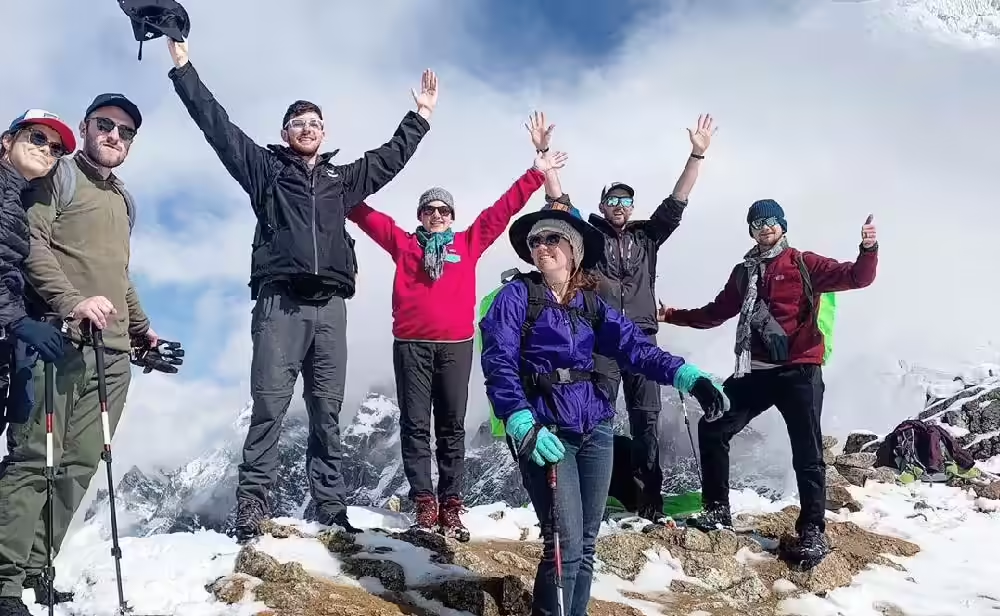
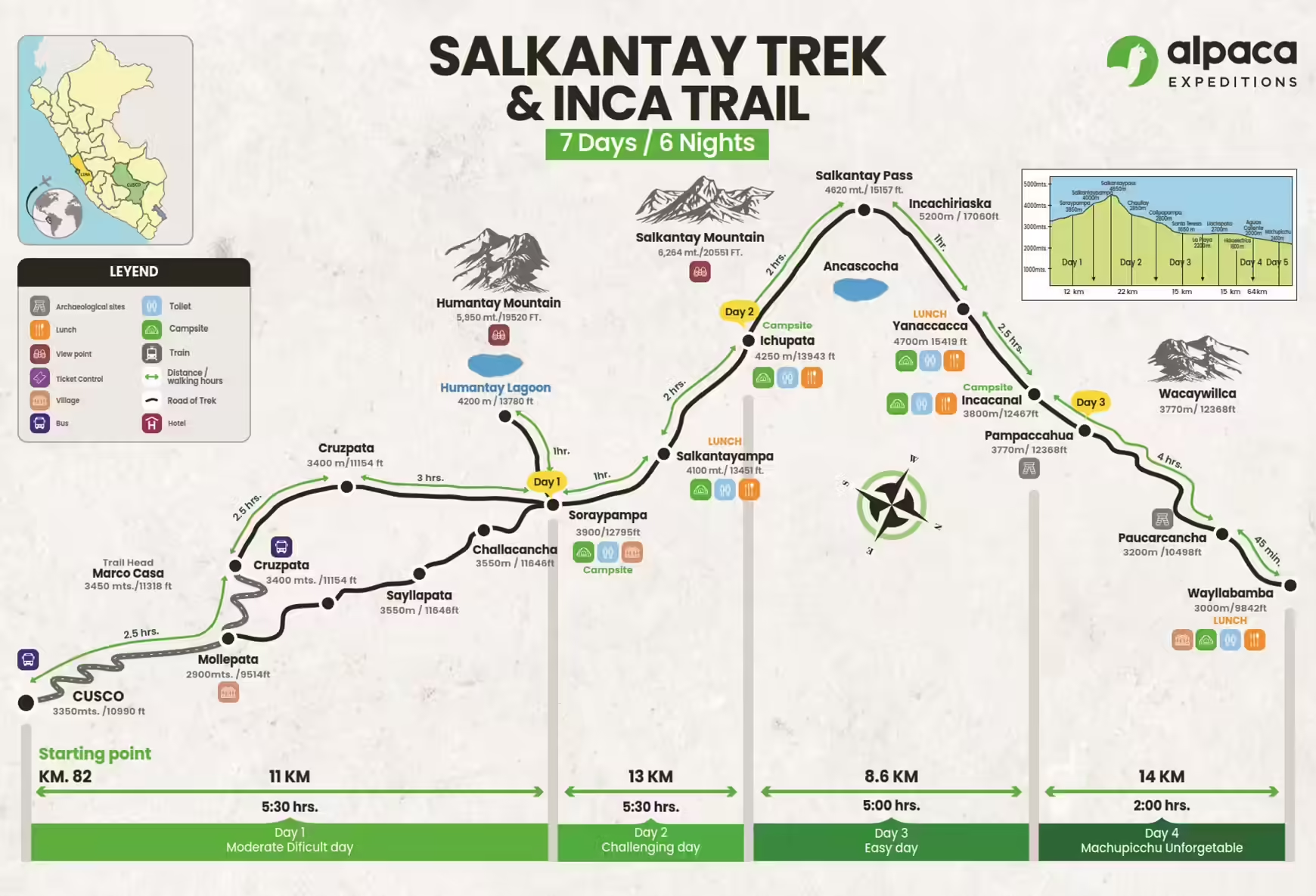
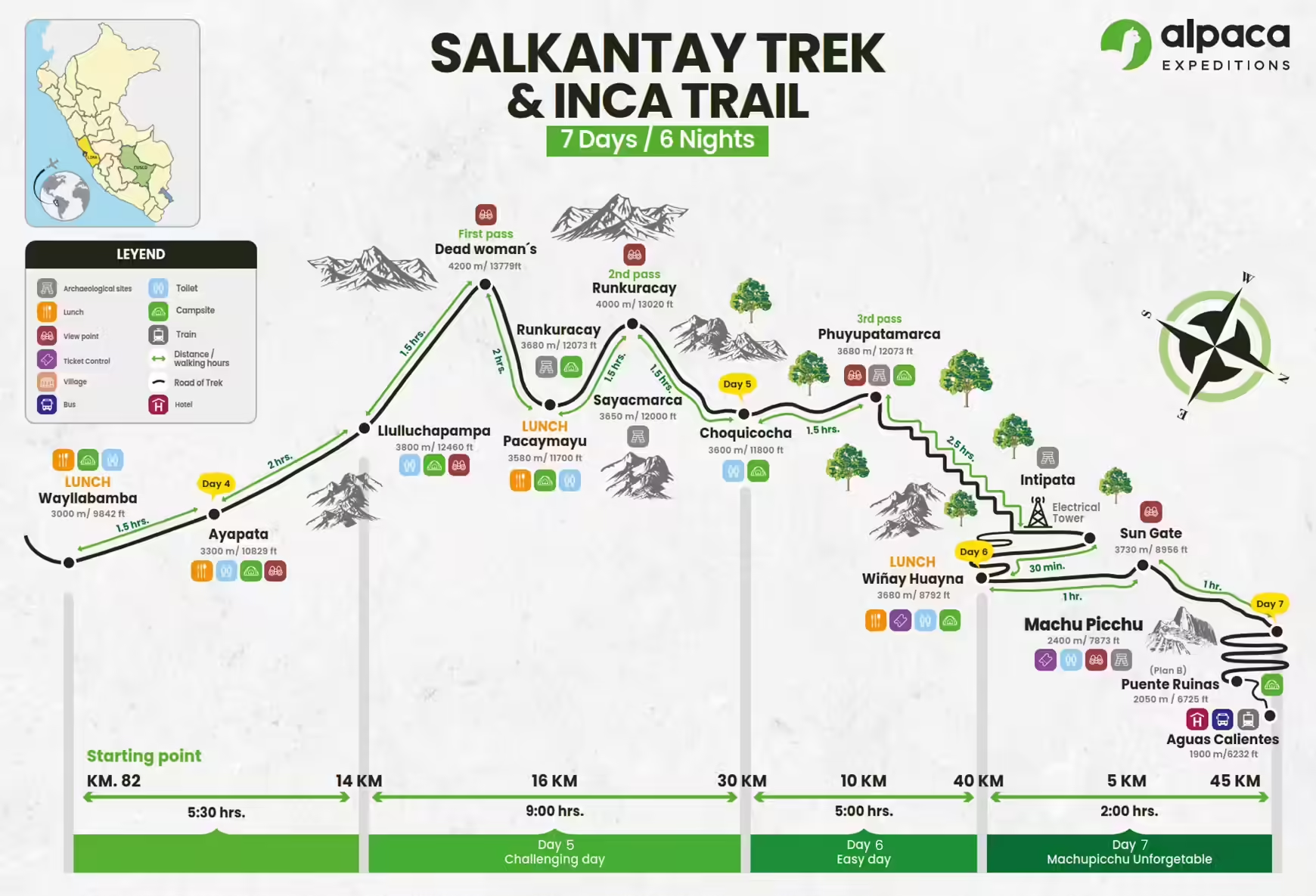
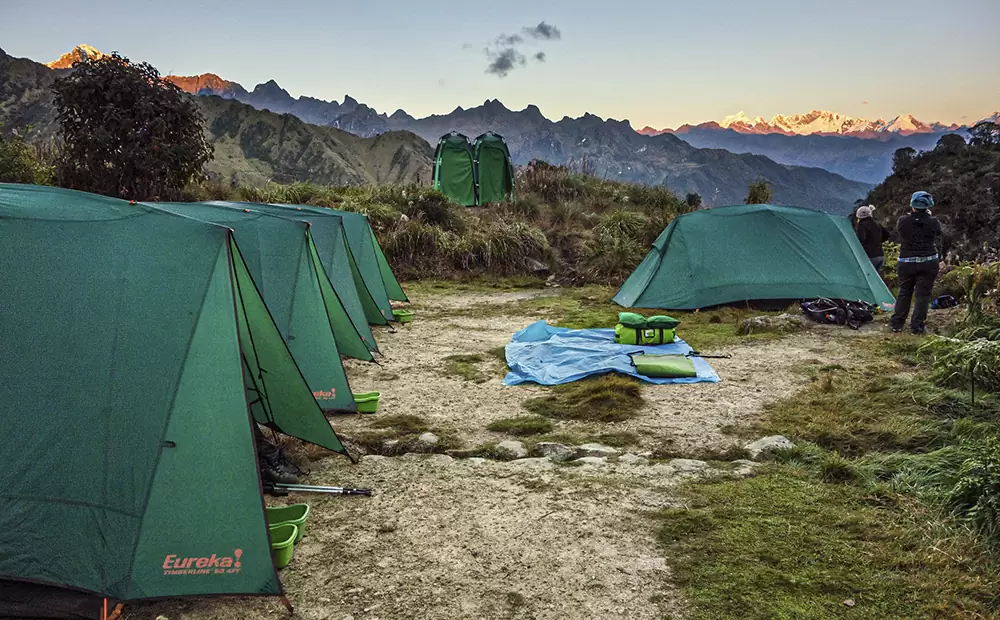
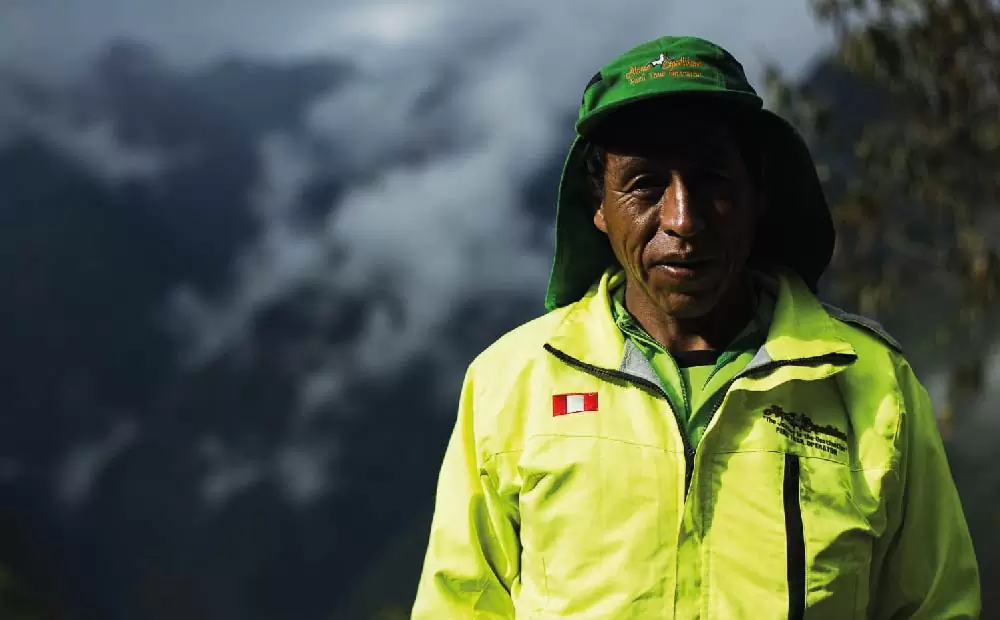
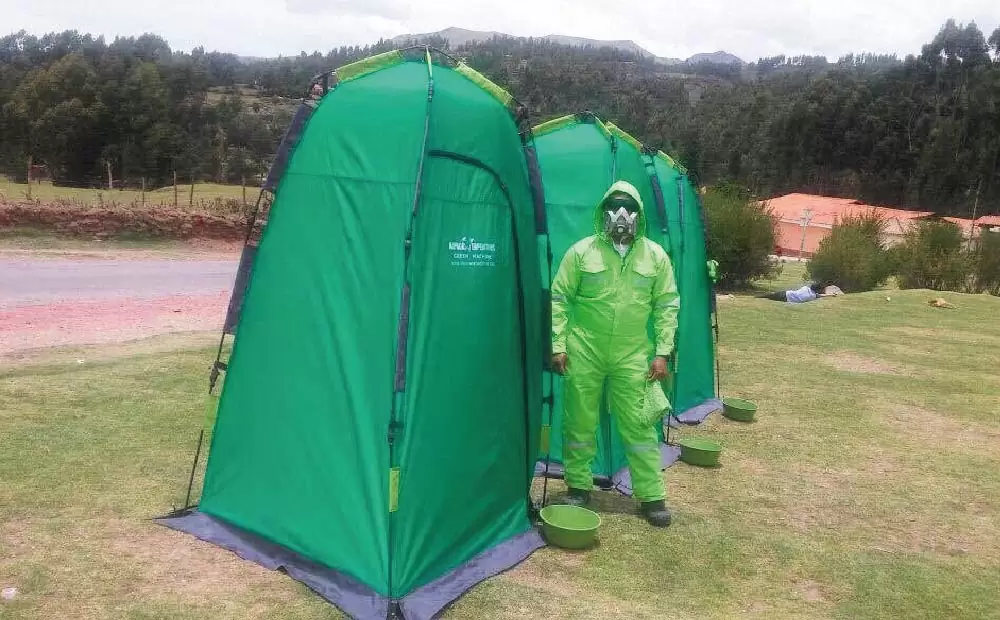
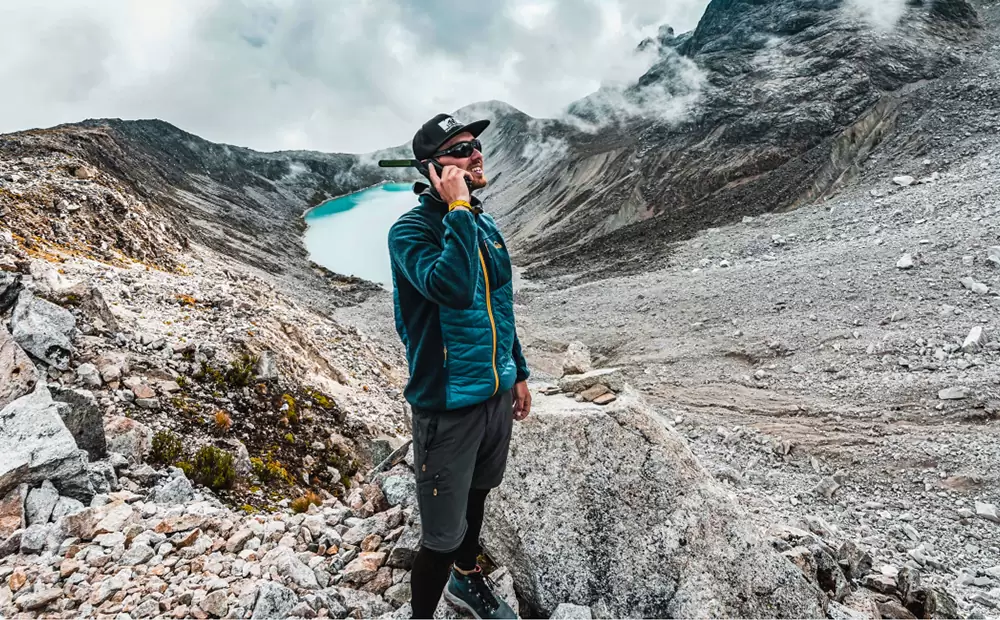
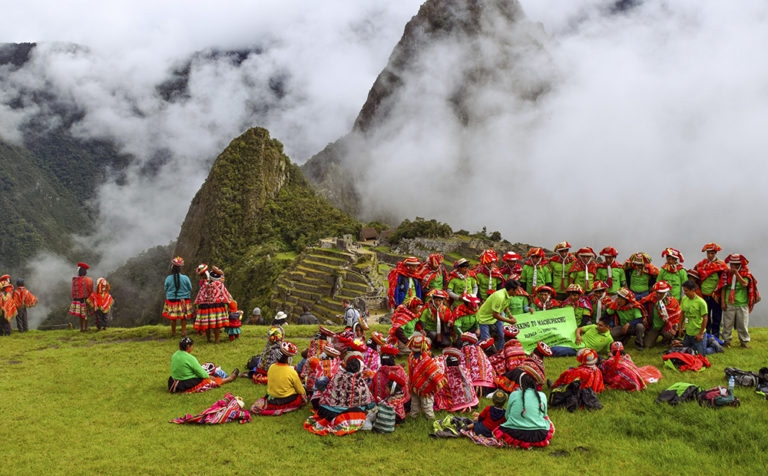
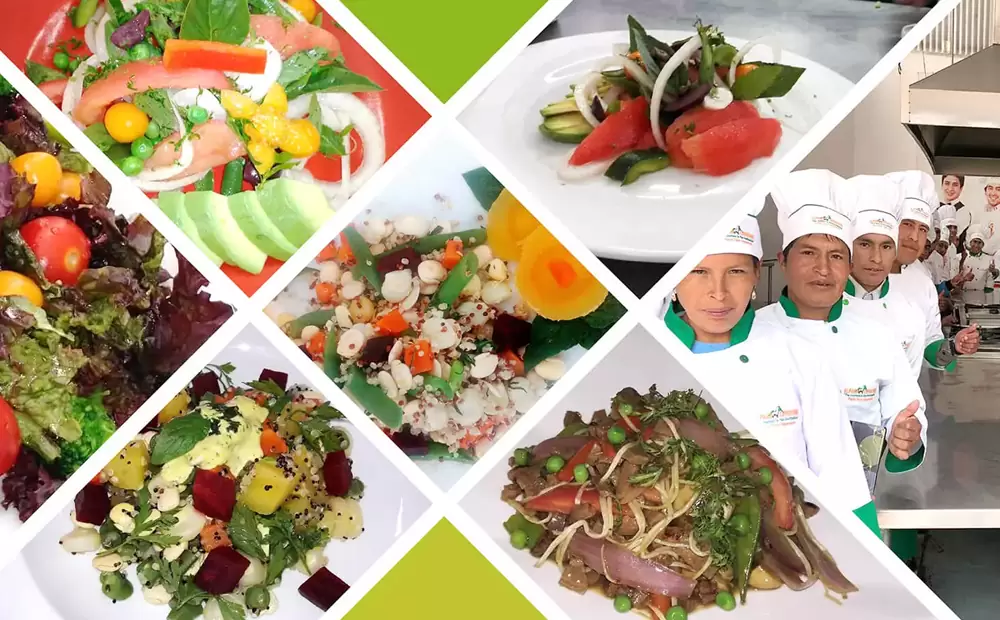
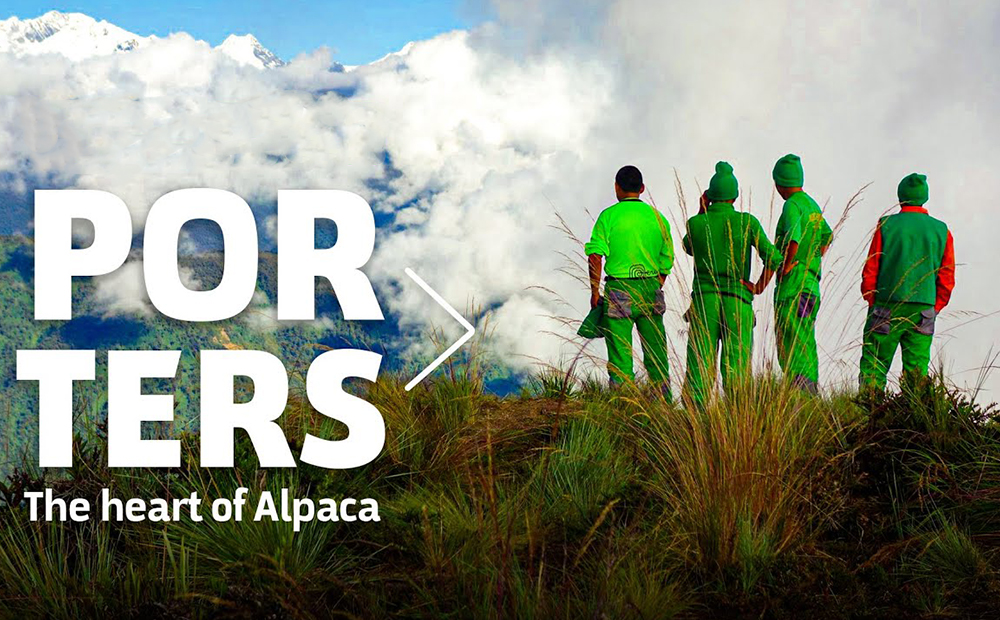
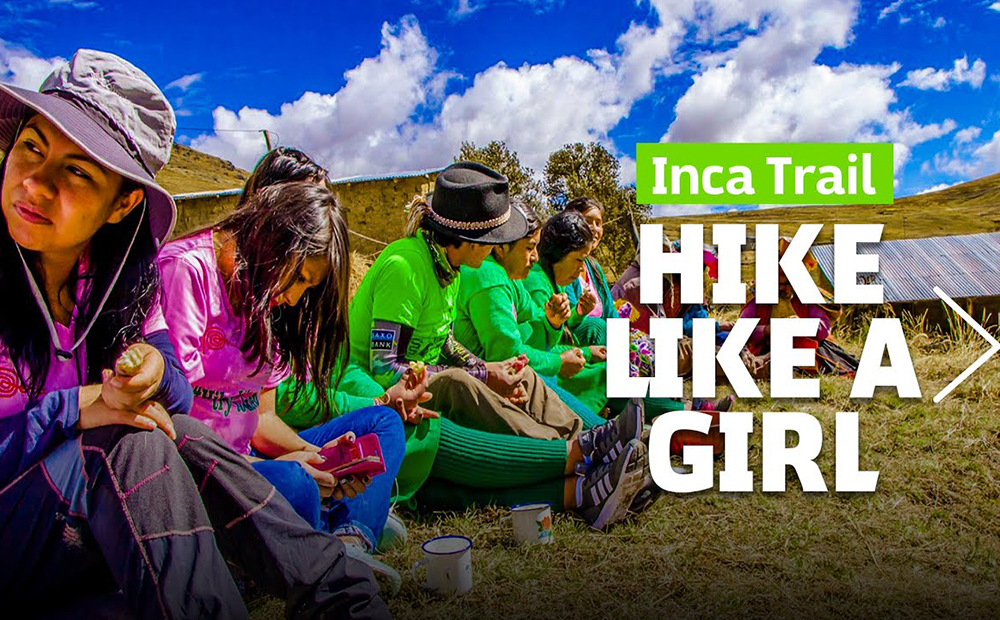
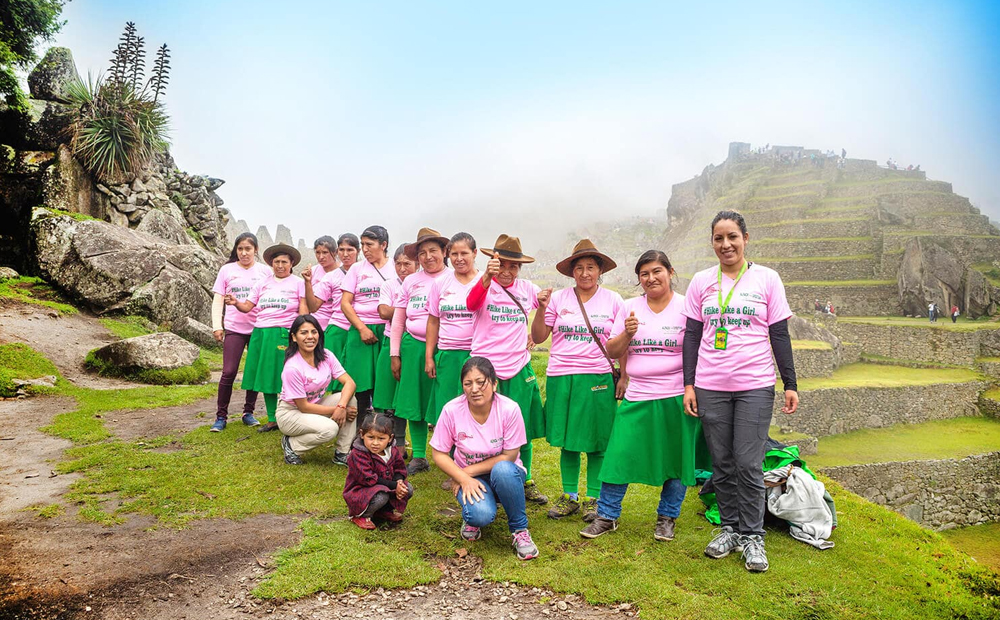
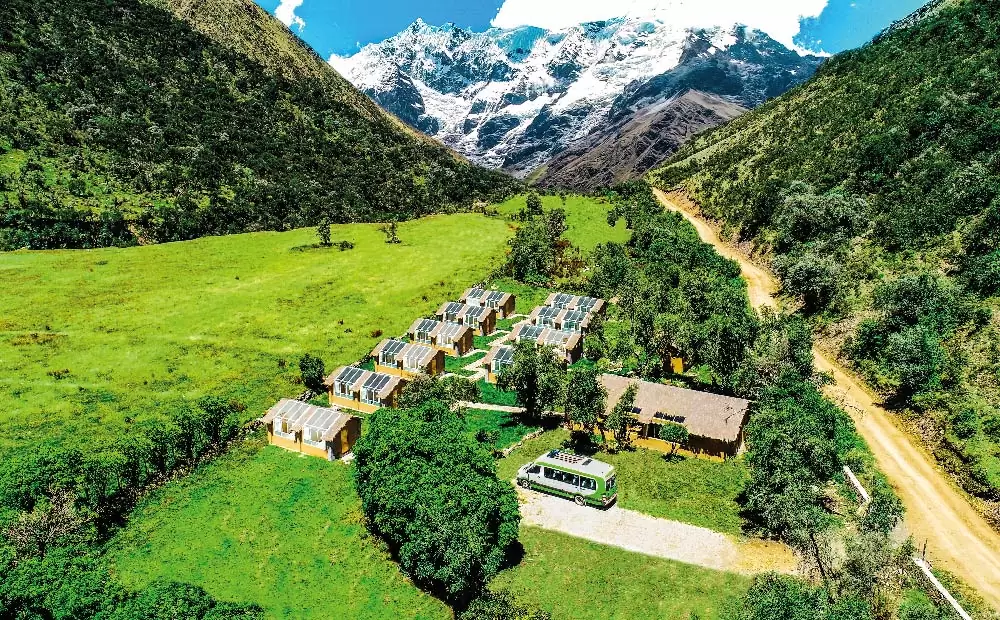
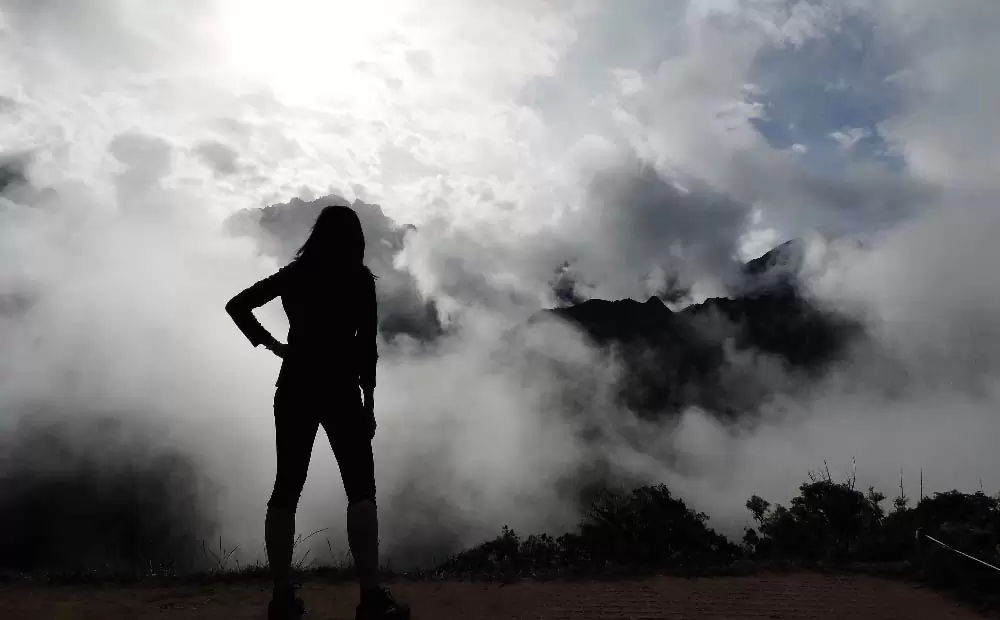
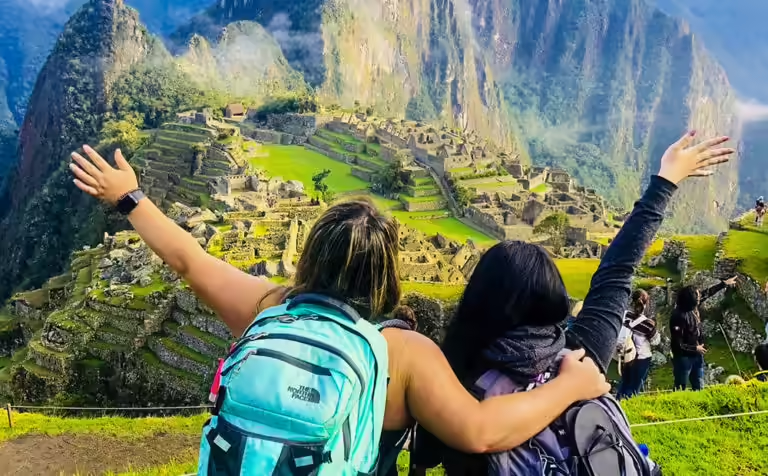
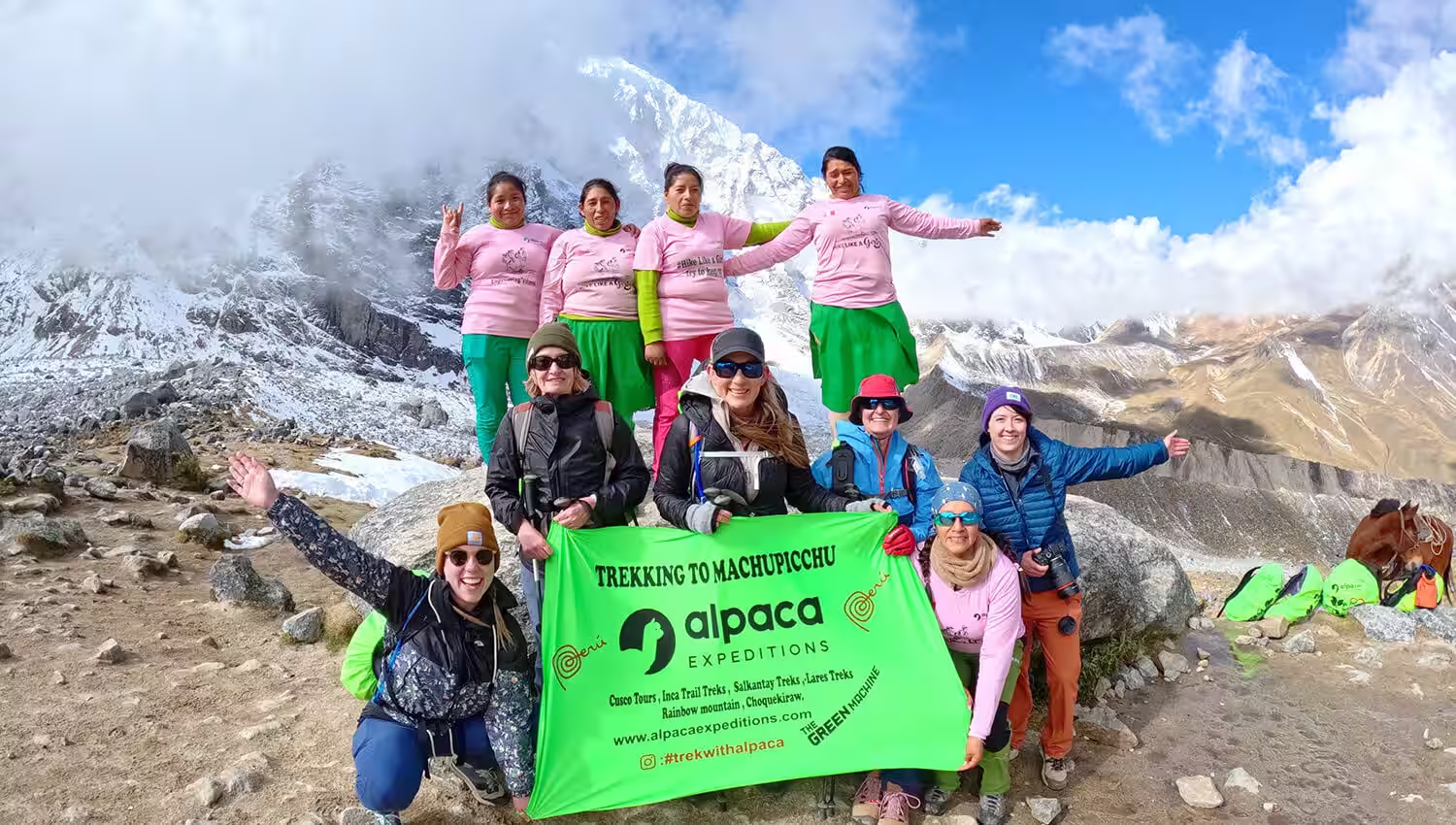
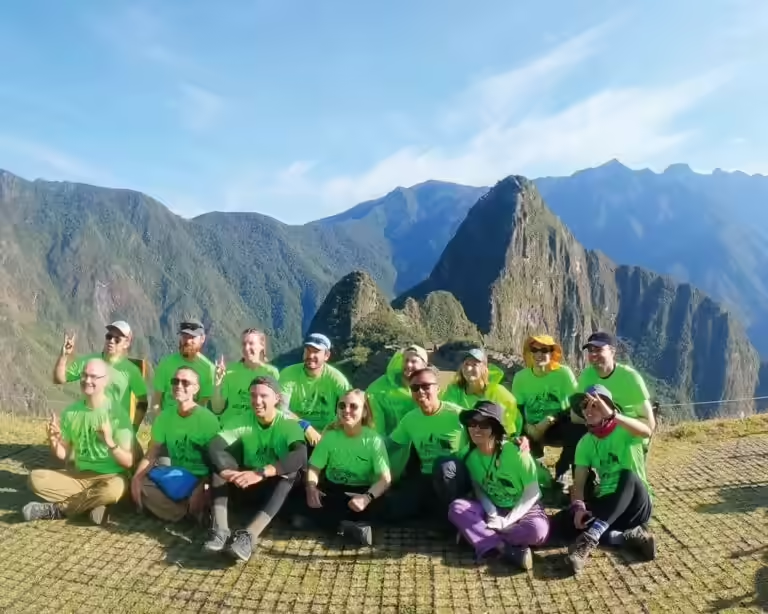
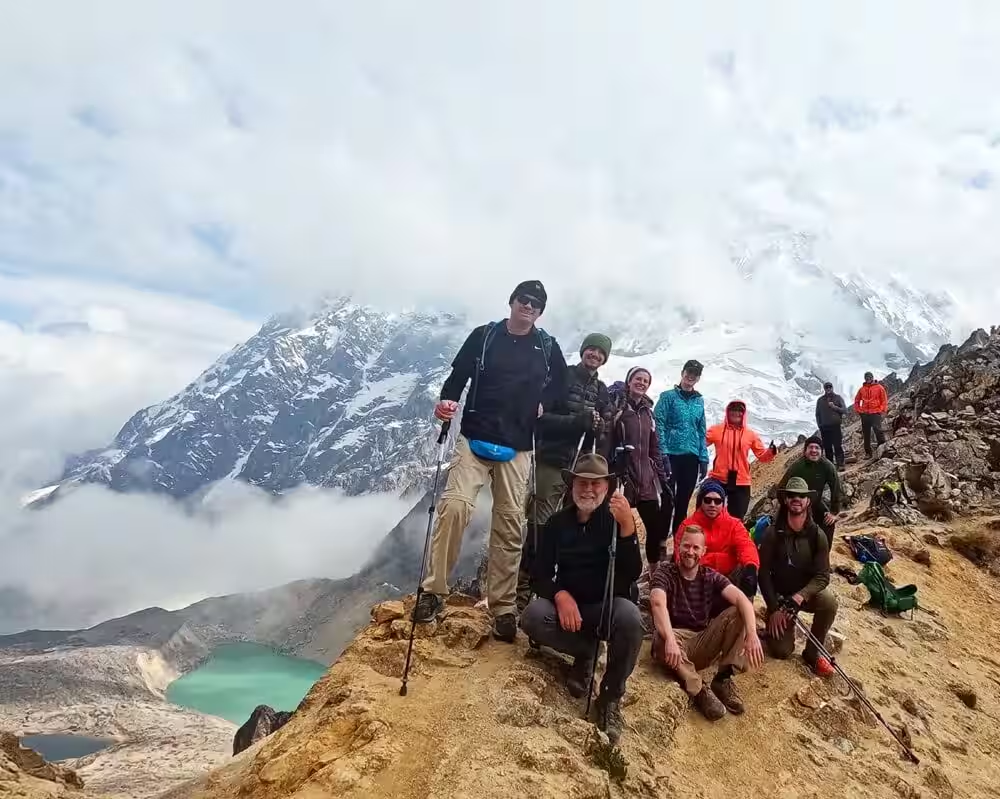
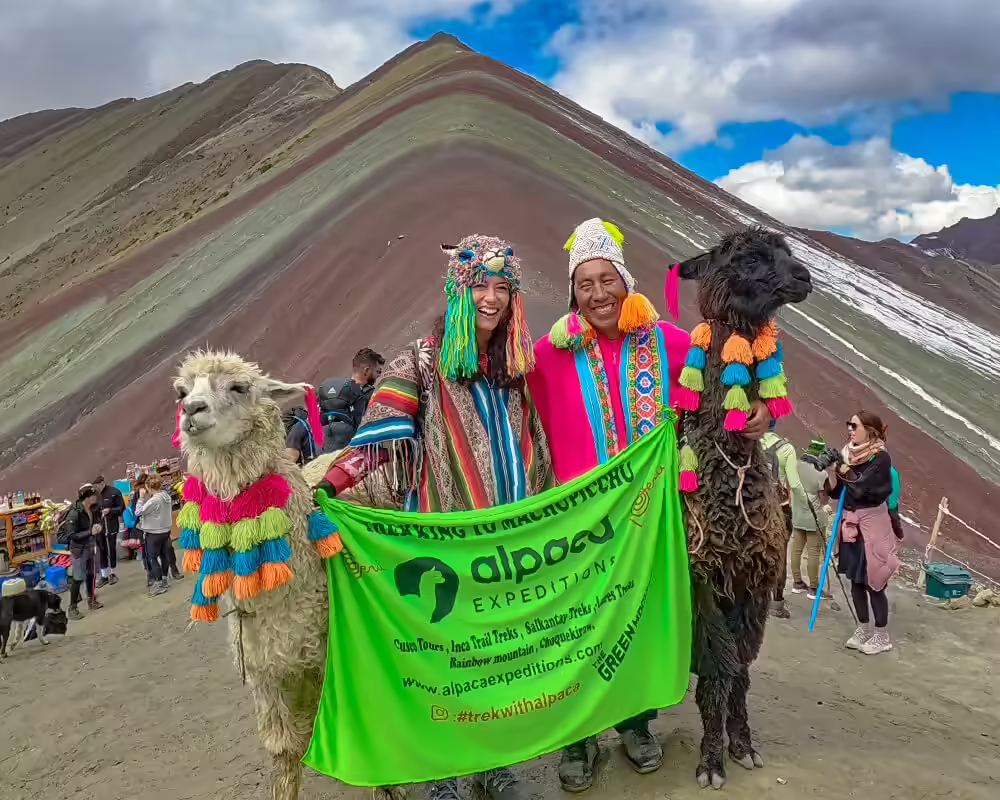
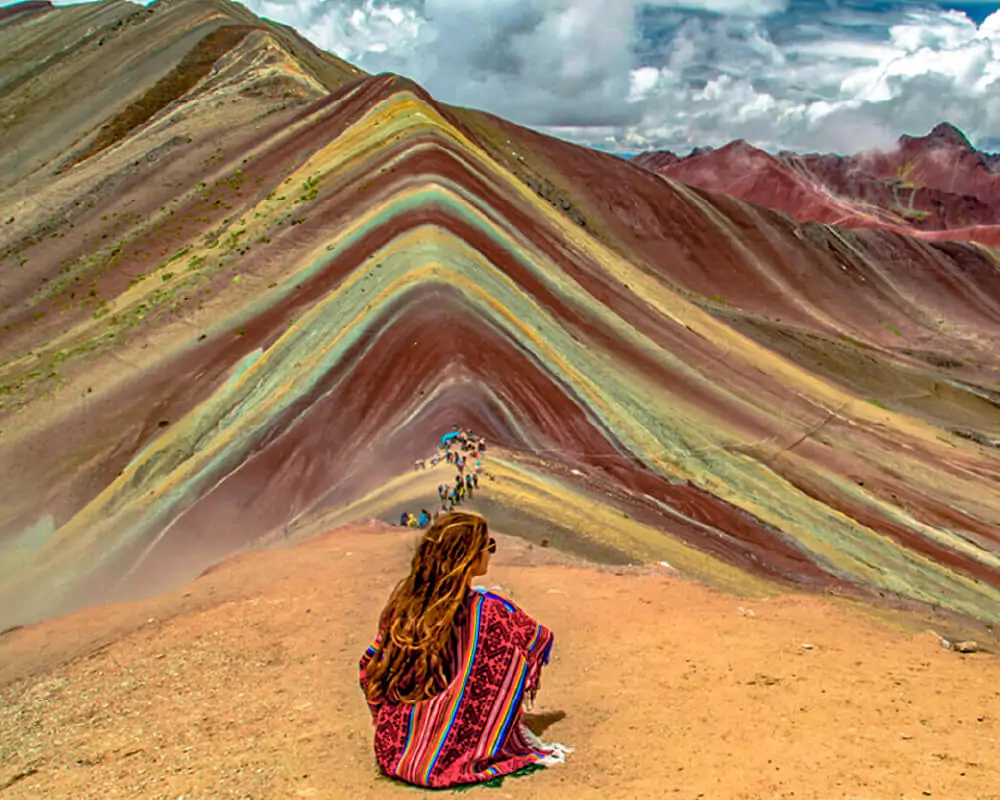
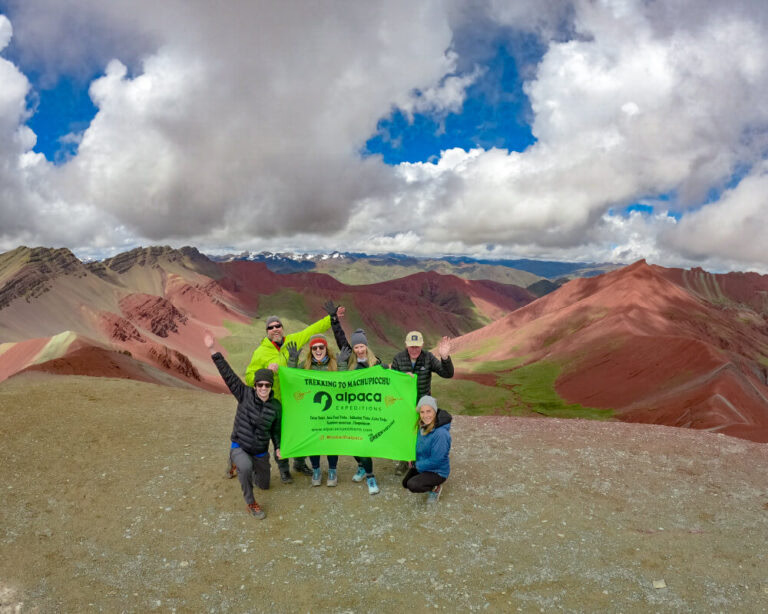


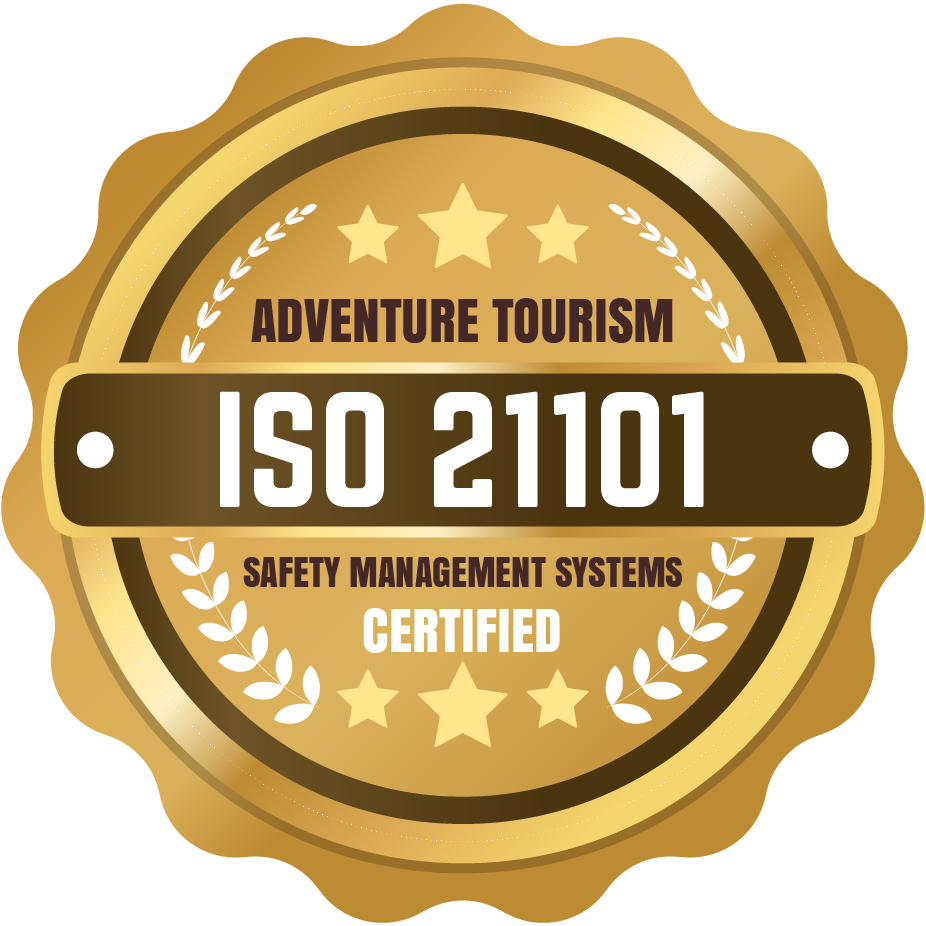
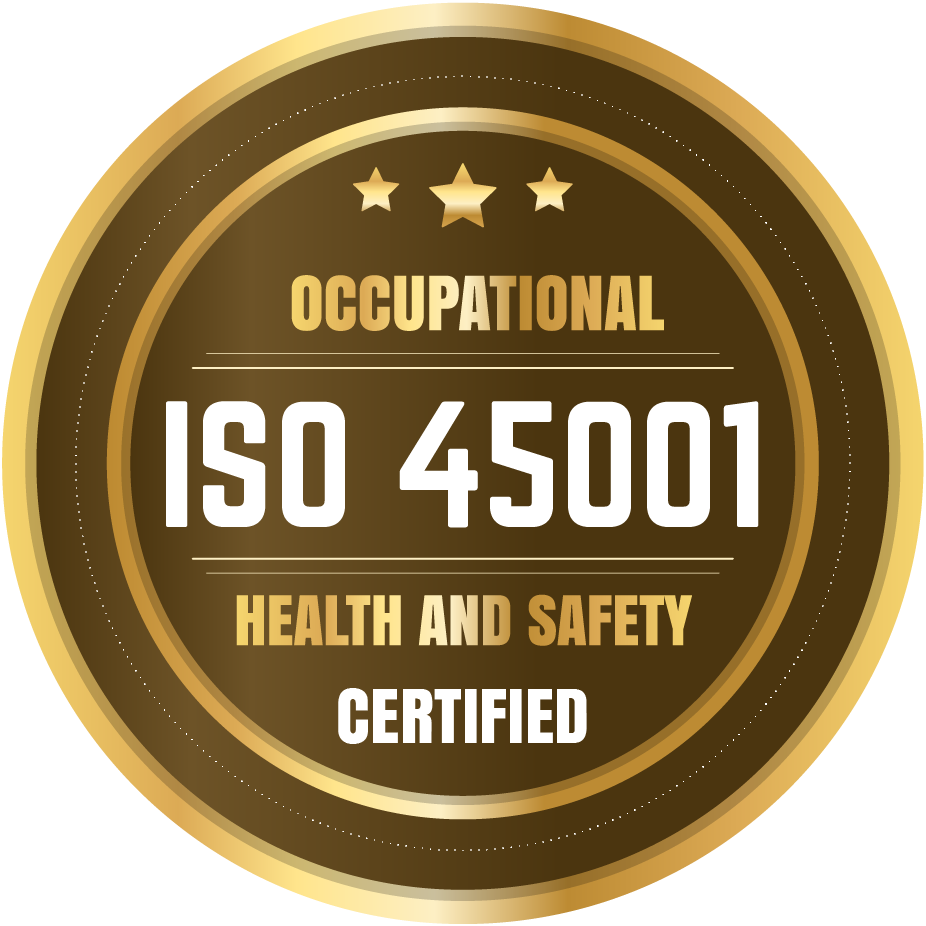
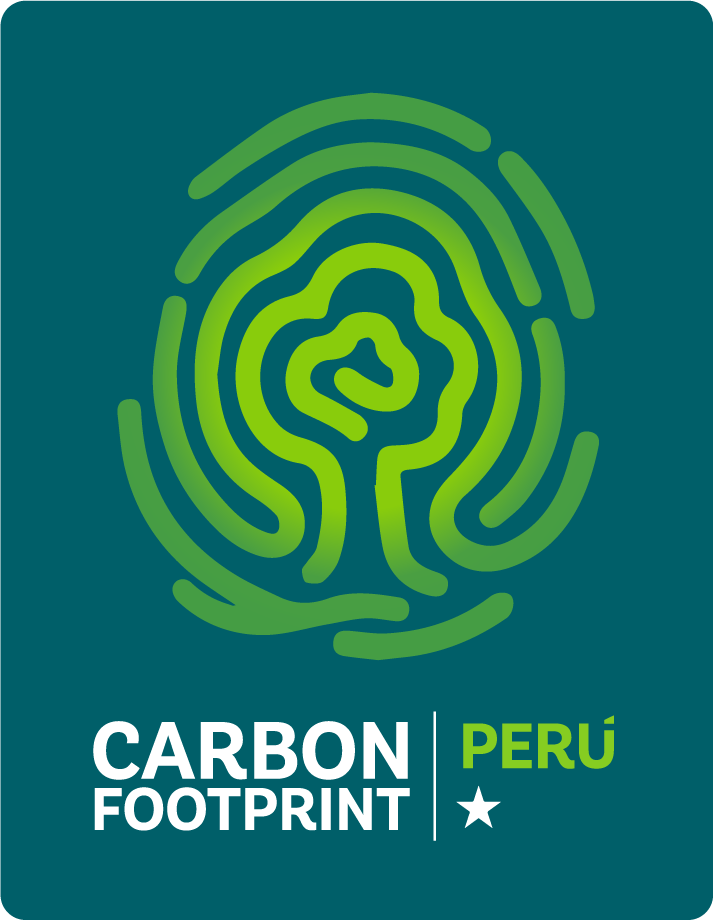
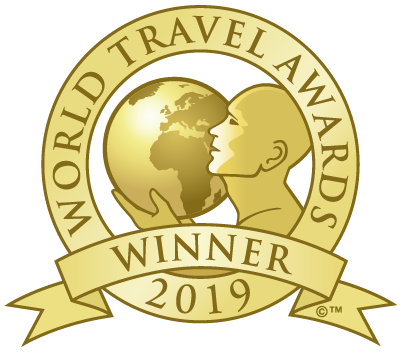








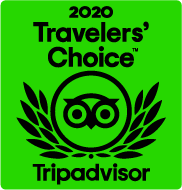
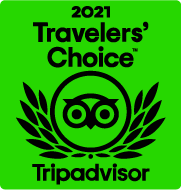
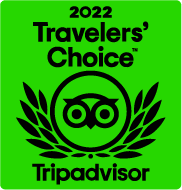
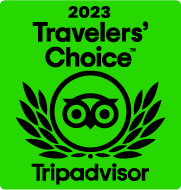
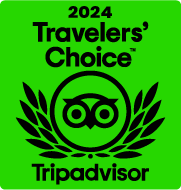












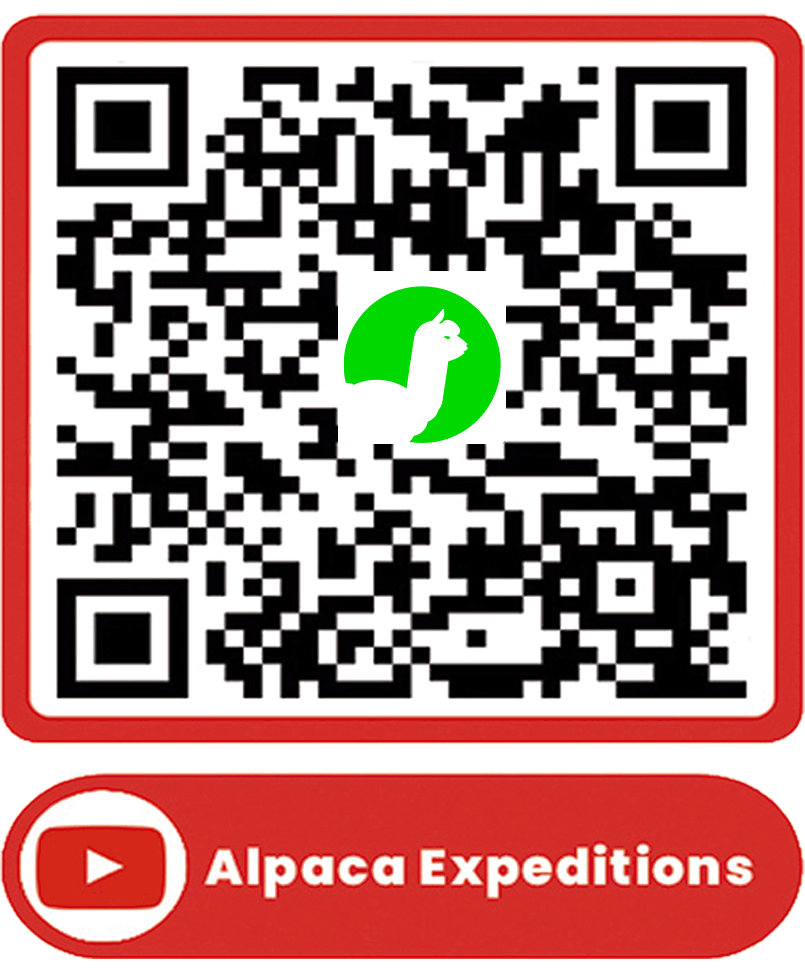

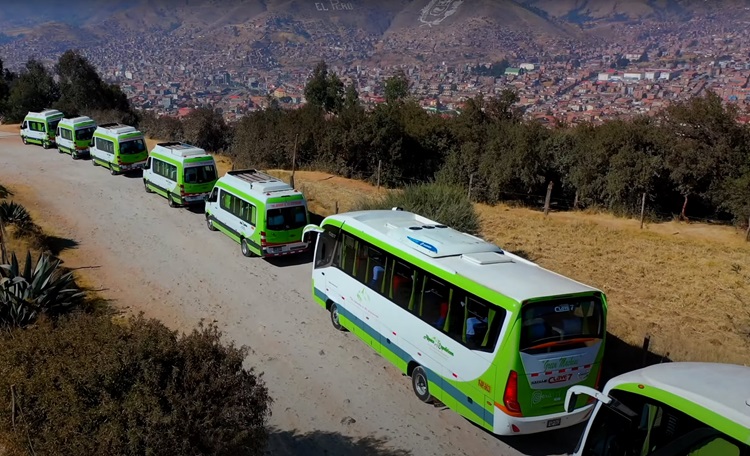
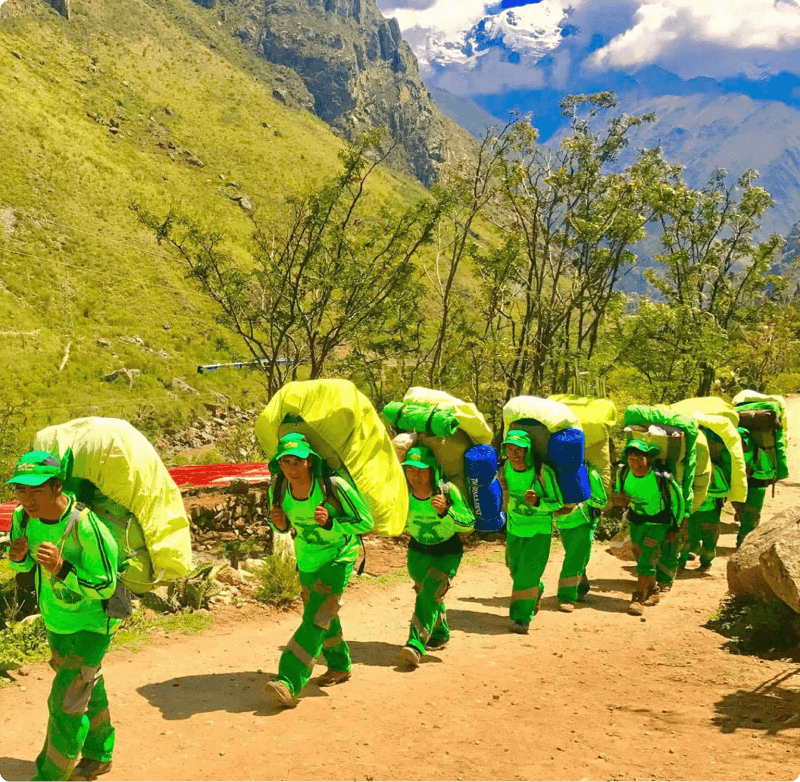 Porters will carry up to 7 kg of your personal items, which must include your sleeping bag and air mat (if you bring or rent one). From us, these two items weigh a combined total of 3.5 kg.
Porters will carry up to 7 kg of your personal items, which must include your sleeping bag and air mat (if you bring or rent one). From us, these two items weigh a combined total of 3.5 kg.